Vered Neta's Blog, page 5
October 31, 2024
How to Make Characters Fall in Love (Without Cheesiness).
Welcome to November!
The pumpkin spice is still fresh, yet Christmas lights are already twinkling on the horizon. Around this time, you can bet the Hallmark movies are already on full throttle, serving up cozy winter romance at every turn.
For writers, it’s a season to analyze just how these romantic movies nail the chemistry that keeps audiences hooked. Whether you’re working on a rom-com or sprinkling romance into your thriller, understanding how to build tension between characters is key.
Let’s dive into the elements of romantic tension, equipped with lessons from some recent beloved movies and books that’ll keep you entertained and inspired. So, writers, grab your cocoa, and let’s learn how to turn up the romantic heat in our stories.
7 Proven Techniques to Make Your Characters Fall Head-Over-Heels.
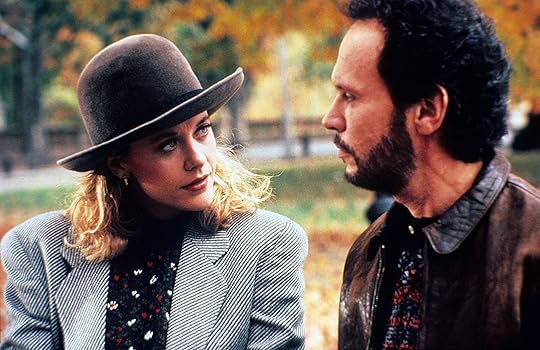 #1 – The Slow Burn – Simmering Chemistry Over Time.
#1 – The Slow Burn – Simmering Chemistry Over Time.
In a slow burn, characters don’t rush to a passionate kiss; instead, they linger in mutual attraction and denial.
This trope lets readers invest in every tiny spark, each “almost” moment, and sigh when it all finally comes together.
In When Harry Met Sally (yes, an “oldie” but still iconic!) the magic of Harry (Billy Crystal) and Sally’s (Meg Ryan) relationship is in the gradual way their connection unfolds.
They don’t click romantically right away; instead, they evolve through shared experiences, friendship, and vulnerability. Each of their interactions is seasoned with their growing affection and respect.
As writers, we can take a page out of this film’s script: let characters meet and not fall in love right away. Watch how that slow simmer makes the payoff so satisfying that it’s impossible to look away.
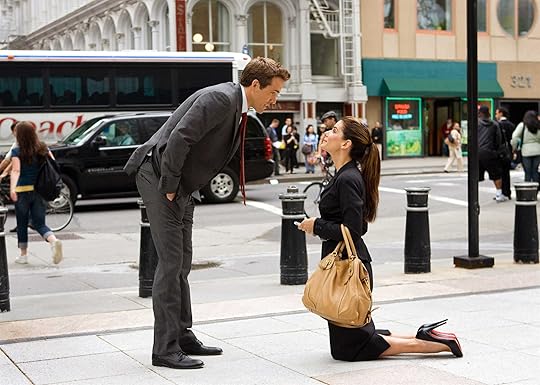 #2 – Opposites Attract – Sparking Tension with Polar Opposites.
#2 – Opposites Attract – Sparking Tension with Polar Opposites.
Few things spell “romantic comedy gold” like a couple with completely opposite personalities. When two characters with contrasting outlooks or values clash, it’s both fun and, at times, explosively tense—perfect for romance!
In The Proposal Margaret (Sandra Bullock), a high-powered editor, and Andrew (Ryan Reynolds), her easygoing assistant, are as different as Alaska and a Manhattan office. But it’s their clashing personalities that keep the sparks flying. Andrew’s dry humor plays off Margaret’s no-nonsense attitude, and they constantly challenge each other.
For writers, pairing characters who are opposites gives an easy entry point for banter and misunderstandings, building the fun side of romantic tension and a foundation for genuine connection.
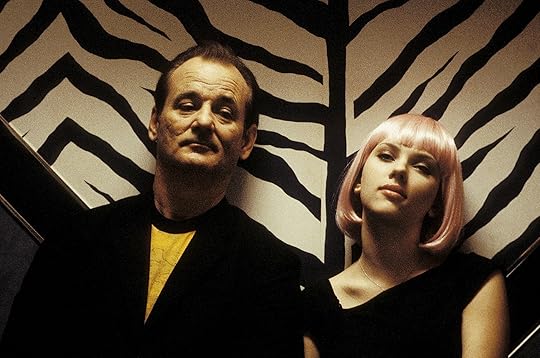 #3 – Unspoken Desire – Building Tension in What’s Left Unsaid.
#3 – Unspoken Desire – Building Tension in What’s Left Unsaid.
Not every romantic tension needs words; in fact, some of the best chemistry comes from what characters don’t say.
Characters’ glances, near-touch moments, and silences create an emotional charge that can be more potent than dialogue.
Lost in Translation is a great example.
Though not in the rom-com genre, Lost in Translation offers a beautiful lesson in unspoken intimacy. Charlotte (Scarlett Johansson) and Bob (Bill Murray) share a connection that goes beyond words.
They’re both lost in Tokyo and find solace in each other’s company. Their chemistry is expressed through looks and small gestures that never have to be spelled out.
For writers, using unspoken moments can add an emotional layer, especially when the characters aren’t quite ready to acknowledge their feelings out loud.
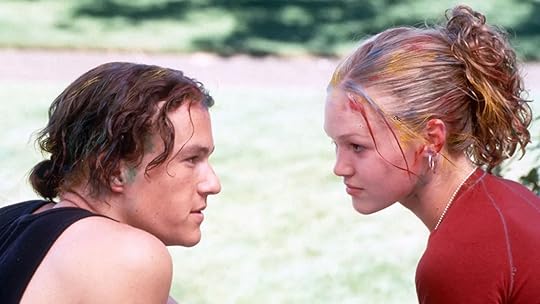 #4 – The Dance of Wit and Banter – Trading Verbal Barbs.
#4 – The Dance of Wit and Banter – Trading Verbal Barbs.
Banter isn’t just for comedic relief; it’s a vital way characters can flirt, argue, and bond all at once.
When characters have quick-witted dialogue, it allows them to explore their feelings indirectly, hiding genuine interest behind sarcasm or humor.
In 10 Things I Hate About You Kat (Julia Stiles) and Patrick (Heath Ledger) have undeniable chemistry, most of which is fueled by banter.
Their verbal sparring gives them a way to engage without becoming vulnerable right away, letting the audience sense their attraction before they do.
In writing, crafting clever back-and-forth exchanges can create an undercurrent of romantic tension that feels natural and engaging.
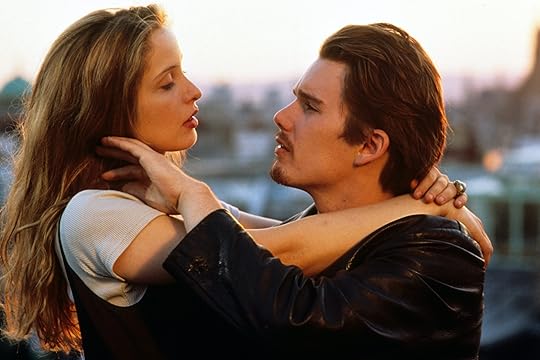
#5 – The Dance of “Almost” Moments – Drawing Out Suspense.
“Almost” moments—the brush of a hand, the nearly confessed feelings, the interrupted kiss—are essential for romantic tension.
They keep readers hooked on the story, waiting for the moment when the characters will finally overcome the barriers holding them back.
Before Sunrise though older, Before Sunrise is timeless when it comes to “almost” moments. Jesse (Ethan Hawke) and Celine (Julie Delpy) meet on a train, and we follow them as they walk through Vienna, talking, sharing glances, and growing closer. Their conversations are filled with moments where you sense they could kiss or hold hands, but don’t. It’s the will-they-won’t-they quality that builds tension.
This is a powerful technique in writing: build up to romantic moments only to subvert them, keeping readers eagerly awaiting the final payoff.
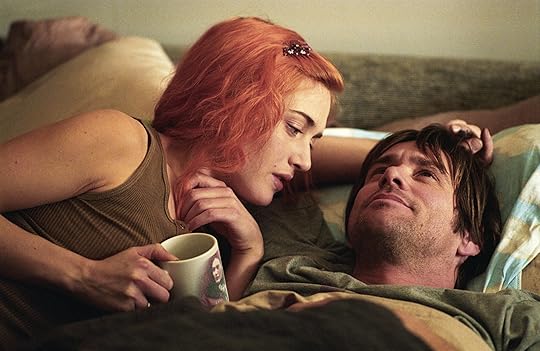
#6 – Vulnerability and Emotional Intimacy – The Heartfelt Core.
While romantic tension often thrives in banter or “almost” moments, it’s ultimately made powerful by emotional depth.
When characters reveal their vulnerable side, showing fears, insecurities, or past wounds, it forges a deeper connection.
In Eternal Sunshine of the Spotless Mind
Joel (Jim Carrey) and Clementine (Kate Winslet) aren’t your typical rom-com pair.
Their relationship is raw and filled with flawed, vulnerable moments. Watching them in their highs and lows, and seeing their weaknesses laid bare, creates a palpable, emotional tension that feels authentic and real.
Writers can make use of this by giving characters opportunities to share more than just surface feelings, letting their love build through mutual understanding and acceptance of each other’s quirks and scars.
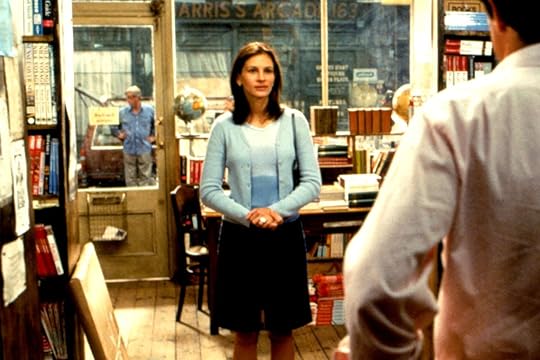
#7 – The Grand Gesture – Timing It Right.
When it’s finally time for a character to express their love, a grand gesture can be the ultimate payoff. However, it needs to be timed just right to avoid seeming over-the-top or forced.
The grand gesture usually works best when it feels like a natural resolution after all the tension has been drawn out, allowing the reader to enjoy the buildup fully.
Nothing illustrates this better than the classic Notting Hill.
The final scene where Julia Roberts’s character tells Hugh Grant’s, “I’m just a girl, standing in front of a boy, asking him to love her,” is so simple yet profoundly grand in its vulnerability (there is a treason why it became such an iconic sentence)
It’s powerful because the tension has been building up the entire movie, and by the time we get there, it feels like the moment we’ve all been waiting for.
In Conclusion – Romantic tension isn’t just about that climactic kiss; it’s in the eye contact, the hesitations, the teasing, and the things left unsaid.
As writers, the art of crafting chemistry lies in the build-up and those memorable moments of anticipation. This holiday season, take inspiration from all the romantic comedies popping up on your screen and add a dash of slow-burn tension, a sprinkle of vulnerability, and a good helping of banter to your writing toolkit.
With a little practice, you’ll have your readers swooning, turning pages, and rooting for your characters long after the Christmas lights fade. Happy writing, and may the holiday spirit inspire your next great romance!
Now it’s YOUR turn – What’s your favorite way to build romantic tension in your writing?
Would love to get your input in the comment box below.
The post How to Make Characters Fall in Love (Without Cheesiness). appeared first on Vered Neta.
October 24, 2024
What Makes a Movie a Classic? Timeless Lessons from 12 Iconic Films.
I’m a sucker for classics. Whether it’s books, cars, or furniture, but especially movies. There’s just something magical about timeless films that pull us in no matter how many years have passed. But here’s the million-dollar question: What exactly makes a movie a “classic”?
While the term “classic” can feel a little subjective (we all have our favourites, right?), there are certain qualities that most classic films share. These movies have some kind of magical blend of storytelling, artistry, and emotional pull that makes them stand out across generations.
So, let’s break it down! What makes a movie a classic, and more importantly, what lessons can modern filmmakers and screenwriters learn from these cinematic masterpieces?
12 Classic Movie And What They Can Teach Us As Screenwriters.
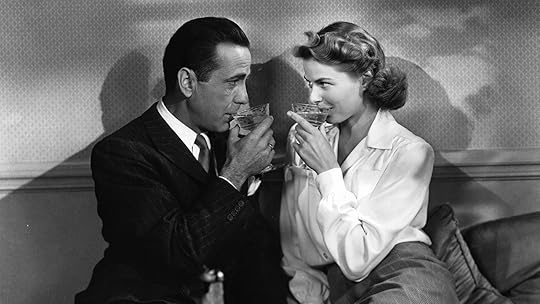 #1 – Casablanca (1942)
#1 – Casablanca (1942)
Why it’s a classic:
There’s a reason Casablanca is consistently ranked among the greatest films ever made. It’s the ultimate love story set against the tense political backdrop of World War II.
The sharp dialogue, unforgettable characters, and iconic lines like “Here’s looking at you, kid” or my favourite “Louis, I think this is the beginning of a beautiful friendship” have cemented its place in cinema history.
Rick and Ilsa’s tragic love affair is personal, yet tied to global stakes, making their choices feel even more profound.
Timeless lesson – Balance personal and larger societal stakes.
Screenwriters can heighten emotional tension by weaving intimate character struggles with grand, external events—whether that’s war, social change, or global crises.
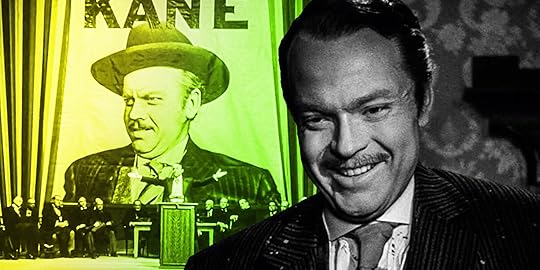 #2 – Citizen Kane (1941)
#2 – Citizen Kane (1941)
Why it’s a classic:
Often hailed as the greatest film ever made, Citizen Kane shattered storytelling conventions with its non-linear narrative and groundbreaking cinematography.
Orson Welles’ exploration of power, ambition, and loneliness still resonates with audiences today.
The film’s structure, use of flashbacks, and deep-focus shots were revolutionary.
Timeless lesson – Dare to experiment.
Welles took creative risks, showing that breaking storytelling norms can lead to brilliance. Modern screenwriters should remember that experimenting with structure or visuals can result in something truly iconic.
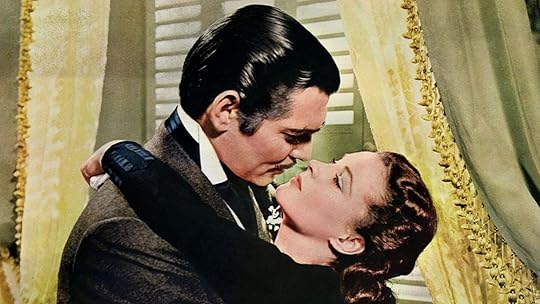 #3 – Gone with the Wind (1939)
#3 – Gone with the Wind (1939)
This sweeping Civil War epic is known for its grandeur, breathtaking visuals, and unforgettable characters like Scarlett O’Hara.
The movie captures the horrors of war and personal ambition, balancing romance and historical tragedy in a way that feels larger than life.
Timeless lesson – Epic films need both personal stakes and grand scale.
For filmmakers tackling large-scale stories, balancing the intimate character journeys with a monumental backdrop (war, history, etc.) ensures the narrative has both heart and spectacle
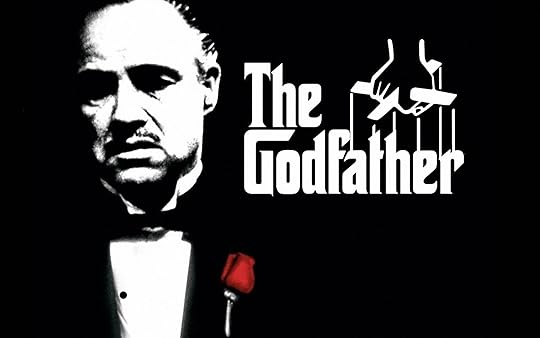 #4 – The Godfather (1972)
#4 – The Godfather (1972)
Why it’s a classic:
The Godfather didn’t just redefine the gangster genre—it created a masterpiece of family loyalty, power, and corruption. Coppola’s meticulous character development and the nuanced performances of Marlon Brando and Al Pacino took the film beyond a mafia story, turning it into an epic tragedy of Shakespearean proportions.
Timeless lesson – Villains don’t need to be one-dimensional.
Audiences are captivated by morally ambiguous characters, and screenwriters should aim to create “bad guys” who are as compelling and complex as the heroes.
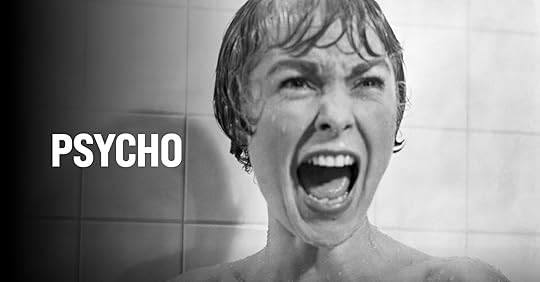
#5 – Psycho (1960)
Why it’s a classic:
Alfred Hitchcock’s Psycho shocked audiences with its twisted narrative, unexpected character deaths, and chilling shower scene. The psychological horror still sends shivers down spines today.
Hitchcock’s ability to manipulate tension and surprise makes it a study in how to keep audiences on edge.
Timeless lesson – Subvert expectations.
Hitchcock’s mastery of suspense shows how defying audience expectations can create unforgettable moments. Don’t be afraid to play with conventions to surprise and captivate your viewers.
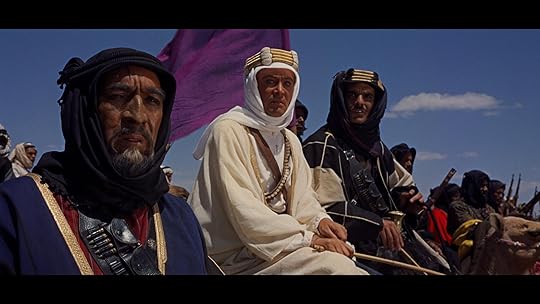 #6 – Lawrence of Arabia (1962)
#6 – Lawrence of Arabia (1962)
Why it’s a classic:
This grand historical epic is renowned for its stunning cinematography and its complex portrayal of T.E. Lawrence’s inner turmoil.
David Lean’s film is a visual masterpiece, using the vast desert landscapes to mirror the character’s psychological struggles.
Timeless lesson – Trust in the power of visuals.
Lean’s work shows how cinematography can reflect emotional states. Filmmakers today can learn to use the environment and visuals to carry narrative weight without relying solely on dialogue.
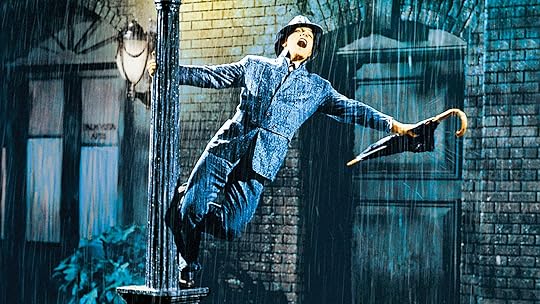
#7 – Singin’ in the Rain (1952)
Why it’s a classic:
This joyful musical, set during Hollywood’s transition from silent films to talkies, remains an absolute delight. It’s light-hearted and full of humor, yet also has sharp commentary on the evolution of the entertainment industry.
The choreography, music, and iconic “Singin’ in the Rain” sequence have left an indelible mark on cinema.
Timeless lesson – Blend fun with substance.
Even the most whimsical genres can carry depth. Screenwriters should aim to create stories that entertain but also offer insight or commentary on broader societal issues.
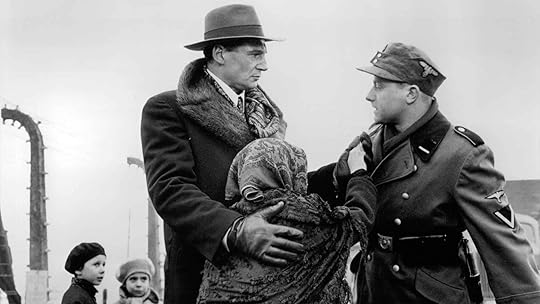 #8 – Schindler’s List (1993)
#8 – Schindler’s List (1993)
Why it’s a classic:
Steven Spielberg’s harrowing Holocaust film is a deeply emotional and historically significant masterpiece. The film’s black-and-white cinematography, combined with its raw storytelling, ensures it remains one of the most powerful films ever made.
Timeless lesson – Handle serious topics with authenticity.
When tackling heavy or historical subjects, it’s vital to approach them with emotional honesty and sensitivity. Spielberg’s focus on showing rather than telling is a lesson in how to handle difficult narratives.
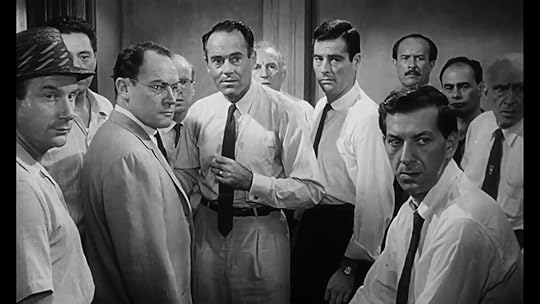 #9 – 12 Angry Men (1957)
#9 – 12 Angry Men (1957)
This tense courtroom drama, set almost entirely in a single room, showcases the power of dialogue and character dynamics.
As 12 jurors debate the fate of a young man, the film explores prejudice, justice, and moral responsibility in a gripping way.
Timeless lesson – Dialogue can carry a film.
You don’t need elaborate sets or effects to create tension. Well-written dialogue and defined character dynamics can keep an audience riveted.
For screenwriters, this is a masterclass in how to craft character-driven stories in confined spaces.
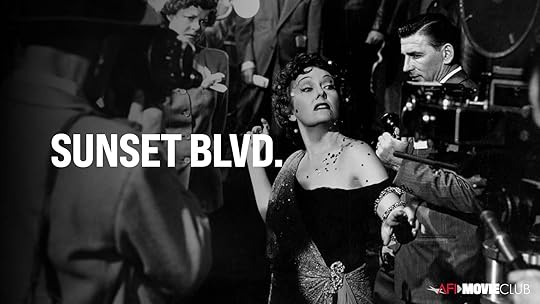 #10. Sunset Boulevard (1950).
#10. Sunset Boulevard (1950).
Why it’s a classic:
Billy Wilder’s Sunset Boulevard is a dark and cynical look at Hollywood’s obsession with fame and the downfall of its stars. The film’s biting commentary on the industry, paired with its noir elements, has made it a timeless tale of ambition, delusion, and decay.
Timeless lesson – Don’t shy away from darker themes.
Complex, flawed characters and darker explorations of human nature can result in powerful, memorable stories. The film’s critique of Hollywood itself remains relevant today.
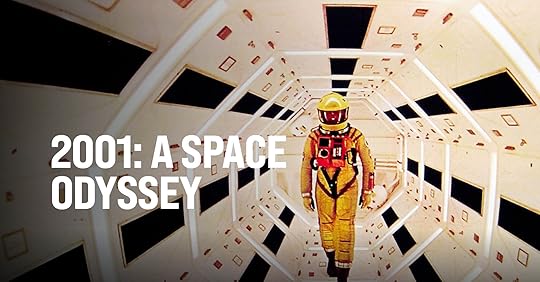 #11. 2001: A Space Odyssey (1968).
#11. 2001: A Space Odyssey (1968).
Why it’s a classic:
Stanley Kubrick’s existential sci-fi masterpiece transcends the genre. With revolutionary special effects and a narrative that dives deep into humanity’s evolution and future, 2001 continues to inspire philosophical debates and awe with its visuals.
Timeless lesson – Leave room for interpretation.
Kubrick’s decision to embrace ambiguity allows audiences to engage with the film on multiple levels. Sometimes, the most powerful stories are the ones that don’t offer clear-cut answers, leaving room for thought and debate.
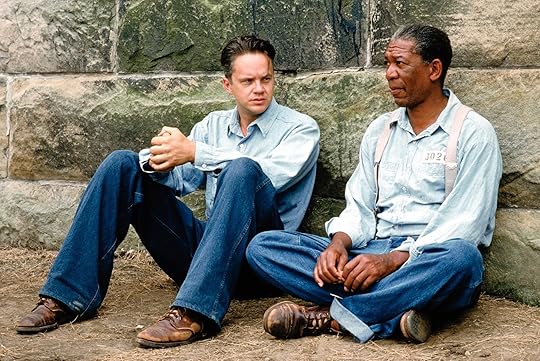 #12. The Shawshank Redemption (1994).
#12. The Shawshank Redemption (1994).
Why it’s a classic:
Though initially underappreciated at the box office, The Shawshank Redemption has grown into one of the most beloved films of all time. Its themes of hope, friendship, and redemption resonate universally.
Tim Robbins and Morgan Freeman’s performances make it an emotional journey that sticks with you long after the credits roll.
Timeless lesson – Simple stories with deep emotional cores can be the most powerful.
You don’t need intricate plots to create a masterpiece. Focusing on universal human experiences like hope and justice ensures your story will resonate with audiences.
In Conclusion – These classic films—each uniquely brilliant—offer invaluable lessons for modern filmmakers and screenwriters. Whether it’s innovative storytelling, emotional depth, or their cultural relevance, these films show that the most enduring cinema doesn’t just entertain—it reflects on humanity, pushes boundaries, and stands the test of time.
So, whether you’re an aspiring filmmaker or just a movie lover, studying these classics can unlock the secrets to crafting stories that resonate across generations. Just remember: a true classic is more than a film—it’s an experience that stays with you forever.
Now it’s YOUR turn – If you could add one more film to this list of classics, what would it be?
Would love to get your input in the comment box below.
The post What Makes a Movie a Classic? Timeless Lessons from 12 Iconic Films. appeared first on Vered Neta.
October 17, 2024
The Magic of Symbolism in Film: It’s All Up to Your Imagination!
Ah, movies! The magical realm where dreams come alive and popcorn is a food group.
I’ve always been a movie buff—let’s just say my social life has often revolved around the flickering light of a projector and the scent of buttered popcorn wafting through the air.
Movies have been my escape, my source of inspiration, and the foundation of my questionable taste in philosophical debates. You know, the kind that leaves you scratching your head and nodding thoughtfully while secretly wondering if you left the oven on at home.
As a teenager, I didn’t lock myself away in my room brooding over dark poetry like most moody youths.
No, I took a more sophisticated route: slipping into a dark cinema and basking in the moody brilliance of masters like Bergman and Wim Wenders. My cinematic choices were like a rite of passage—a crash course in existential musings where the only thing heavier than the dialogue was the symbolism.
Let’s take a moment to discuss this mysterious creature known as symbolism in film.
It’s a bit like that hidden menu item at your favourite restaurant—everyone talks about it, but you don’t really know what to expect until you dive in.
Film symbolism cleverly uses imagery, colours, objects, or even characters to convey deeper meanings. It’s the director’s way of whispering secrets to the audience, inviting us to ponder and interpret what we see.
While some symbols are universal—like a stormy sky indicating doom or a bright sun suggesting hope—others are more nuanced, tailored to a film’s specific context.
The beautiful thing about symbolism is that it’s not set in stone. The meaning you derive from a film might completely differ from what the director intended. It’s like deciphering your friend’s vague Instagram captions—everyone has their own interpretation.
7 Classic Examples of Film Symbolism.
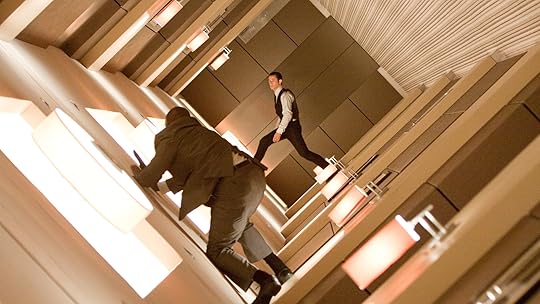
#1 – The Rotating Hallway in Inception (2010).
Ah, Inception! A film that had us all questioning our grip on reality.
Christopher Nolan’s masterpiece features a spinning hallway that’s more than just a gravity-defying stunt. This dizzying environment represents the unpredictable nature of dreams.
As Joseph Gordon-Levitt’s character fights an enemy in a shifting corridor, we’re reminded that reality is as stable as your Wi-Fi connection—unpredictable and often shaky.
This clever visual metaphor illustrates the chaos of the human subconscious, inviting us to ponder the complexities of our own minds.
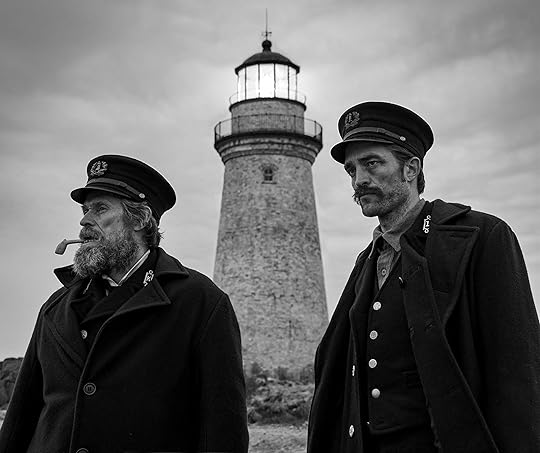 #2 – The Lighthouse in The Lighthouse (2019).
#2 – The Lighthouse in The Lighthouse (2019).
In Robert Eggers’ psychological horror film, the titular lighthouse is anything but a straightforward beacon.
For Willem Dafoe’s character, it’s a god-like figure demanding reverence, while for Robert Pattinson’s character, it becomes an obsession that drives him to madness.
The lighthouse’s blinding light represents enlightenment—something that can be both illuminating and overwhelming.
This complex symbol invites us to consider the thin line between clarity and insanity.
Or, in simpler terms, how sometimes, knowing too much can drive you a little nuts.
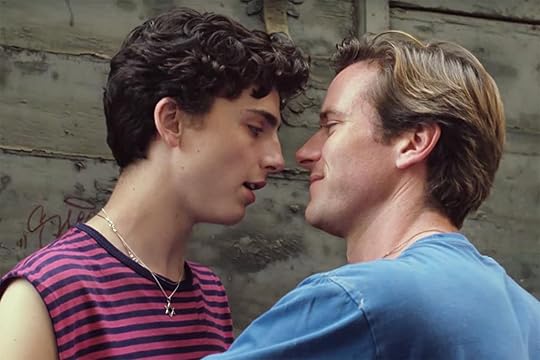
#3 – The Peaches in Call Me by Your Name (2017).
Let’s talk about peaches, shall we?
In Call Me by Your Name, this juicy fruit becomes a metaphor for desire and intimacy.
Elio’s (Timothée Chalamet) tender encounter with a peach reflects his raw, vulnerable emotions as he navigates his budding relationship with Oliver (Armie Hammer).
It’s all very poetic until you remember you’re just watching a movie about a summer romance. The peach symbolizes the fleeting nature of love and the bittersweet beauty of first experiences.
So next time you bite into a peach, remember—it’s not just a snack; it’s a reminder of the fragile sweetness of youth.
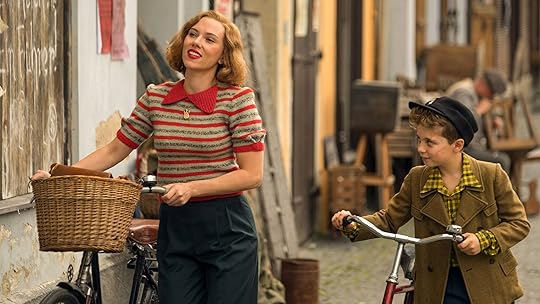
#4 – Shoes in Jojo Rabbit (2019).
In Jojo Rabbit (2019), Taika Waititi employs the symbolism of shoes to explore the harsh realities of Hitler’s Germany through the eyes of a child.
The film depicts how hatred can seep into young minds, with Jojo’s imaginary friend, Adolf Hitler, serving as a manifestation of his indoctrination.
Shoes become a powerful motif that weaves through the narrative, representing both identity and loss.
A poignant moment occurs when Jojo observes his mother, Rosie (Scarlett Johansson), dancing in her shoes, which later become a haunting reminder of her fate when he recognizes her hanging from the gallows.
This heartbreaking imagery encapsulates the trauma and genocide of war, emphasizing that shoes often signify the remnants of lives lost under an oppressive regime. Jojo’s character arc further illustrates this symbolism; as he kicks away his imaginary Hitler, he transitions from his mother lacing his shoes to lacing up Elsa’s (Thomasin McKenzie), marking his liberation from Nazi fanaticism.t.
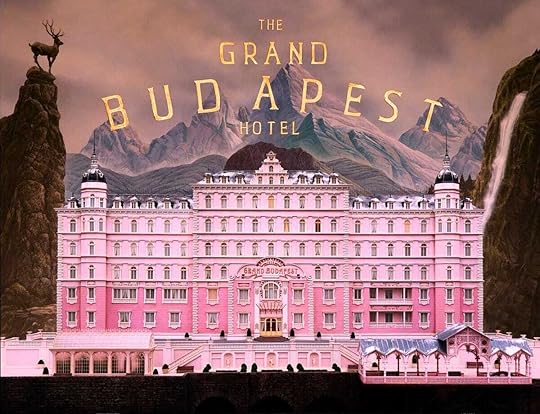
#5 – The Color Pink in The Grand Budapest Hotel (2014).
In The Grand Budapest Hotel, the color pink serves as a powerful symbol of nostalgia, elegance, and the transience of beauty.
The hotel itself, with its striking pink facade, represents a bygone era of grandeur and charm, evoking a sense of warmth and luxury that contrasts sharply with the film’s darker themes of chaos and violence.
This vibrant hue is intricately woven throughout the film, from the lavish interiors to the characters’ costumes, emphasizing the fleeting nature of both the hotel’s glory and M. Gustave H.’s (Ralph Fiennes) character.
As the narrative unfolds against a backdrop of war and moral decline, the recurring pink motifs highlight the tension between the allure of the past and the harsh realities of the present. Ultimately, the color pink encapsulates the film’s exploration of memory and the fragility of beauty, serving as a poignant reminder of the elegance that once was, now overshadowed by inevitable loss.
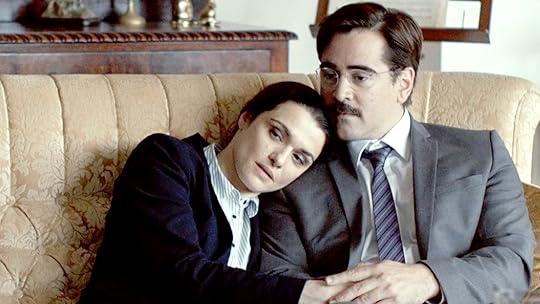 #6 – The Dog in The Lobster (2015).
#6 – The Dog in The Lobster (2015).
In The Lobster (2015), the dog serves as a poignant symbol of loyalty and the profound loss of individuality, embodying David’s (Colin Farrell) brother, who has been transformed into an animal after failing to find a romantic partner.
This transformation underscores the harsh realities of a society that reduces human relationships to mere survival, stripping individuals of their identities and autonomy.
The dog’s presence represents the emotional toll of conformity, as he retains an affectionate bond with David, signifying the enduring connections that persist despite the absurdity of their circumstances. Their interaction highlights the bittersweet nature of familial love and the sacrifices made in the pursuit of acceptance.
As David navigates the oppressive rules of his world, his brother’s transformation into a dog serves as a stark reminder of the potential consequences of societal expectations, reinforcing the film’s critique of the lengths to which people must go to attain companionship in a conformist society.
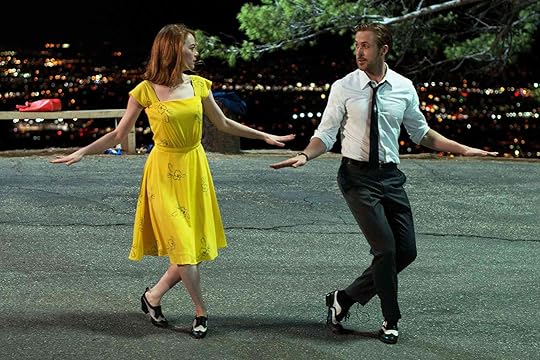
#7 – The Yellow Dress in La La Land (2016).
And finally, we arrive at the yellow dress in La La Land. In La La Land, the yellow dress worn by Mia (Emma Stone) during the “A Lovely Night” dance sequence symbolizes the blossoming romance between her and Sebastian (Ryan Gosling).
The vibrant color stands out reflecting the joy and excitement of their connection. As they dance under the stars, the dress captures the enchanting moment where their aspirations and feelings intertwine, embodying the hope and possibility of love.
The bright hue of the dress mirrors Mia’s optimism as she opens her heart to Sebastian, contrasting with the struggles they both face in pursuing their dreams.
This romantic moment is filled with a sense of magic and whimsy, emphasizing the beauty of new beginnings in both love and life.
Ultimately, the yellow dress serves as a visual metaphor for the warmth and tenderness of their budding relationship, encapsulating the essence of passion and ambition that defines their journey together.
In Conclusion – As you immerse yourself in the magical world of film, remember that symbolism is not a one-size-fits-all experience. Each of these examples offers a canvas for our interpretations, inviting us to see beyond the surface and engage with the film on a deeper level. The beauty of cinema lies in its ability to spark discussion, elicit emotions, and provoke thoughts—often leading to wildly different interpretations.
In the end, whether you’re munching popcorn in a theater or discussing your favorite films with friends, remember that your interpretation of symbolism is just as valid as the director’s. So embrace the quirks, the absurdities, and the profound moments, and let your imagination run wild. Because, in the realm of film, the meaning is always up to you!
Now it’s YOUR turn – What other films effectively use symbolism?
Would love to get your input in the comment box below.
The post The Magic of Symbolism in Film: It’s All Up to Your Imagination! appeared first on Vered Neta.
October 10, 2024
From Tolkien to Kay – What Writers Can Learn About Epic Fantasy Storytelling.
When I first started out as a writer, I had a very specific vision: “Someday, I’m going to write the ultimate fantasy novel!” It was the dream, my mountaintop goal.
After all, what’s more iconic, more legendary in the world of storytelling than the epic fantasies of J.R.R. Tolkien? Middle-earth! Hobbits! The One Ring! For years, The Lord of the Rings was my gold standard, the story I held in my head as the pinnacle of what fantasy could be.
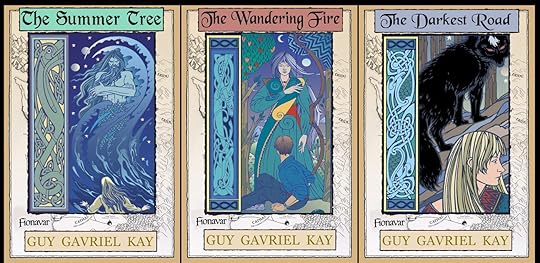 But here’s the thing: the more I explored the genre, the more I realized there’s a whole world of epic fantasy that goes far beyond the borders of Tolkien’s Middle-earth. And let me tell you—one book series in particular completely stole my heart: The Fionavar Tapestry by Guy Gavriel Kay.
But here’s the thing: the more I explored the genre, the more I realized there’s a whole world of epic fantasy that goes far beyond the borders of Tolkien’s Middle-earth. And let me tell you—one book series in particular completely stole my heart: The Fionavar Tapestry by Guy Gavriel Kay.
Have you ever fallen so hard for a story that you can’t stop thinking about it? That’s what Kay’s work did to me.
Let’s be real, The Lord of the Rings is iconic, but The Fionavar Tapestry? It’s like stepping into a whole other dimension of fantasy—one that’s familiar yet incredibly different.
So, if you’re a fantasy writer like me (or just a fan of epic tales), buckle up! Because I’m about to break down the differences between these two beloved series and share what you can learn to level up your own fantasy writing.
Similarities – Where Tolkien and Kay Shake Hands.Before we dive into the juicy differences, let’s talk about what these two series have in common.
Both The Lord of the Rings and The Fionavar Tapestry deliver everything you’d expect from high fantasy: vast worlds, epic battles, and rich mythologies drawn from the ancient legends of Earth.
Tolkien draws heavily from Norse, Anglo-Saxon, and Arthurian lore. Meanwhile, Kay casts a wider net, weaving in Celtic, Greek, and even Arthurian legends too. Both stories revolve around a core group of ordinary people thrust into an extraordinary, world-saving quest—classic fantasy vibes, right?
However, Kay has a unique connection to Tolkien’s legacy—he worked with Christopher Tolkien to help edit The Silmarillion.
So it’s no surprise that The Fionavar Tapestry feels like an homage to the great professor himself. But Kay didn’t stop at honouring Tolkien—he built something new, fresh, and emotionally resonant.
And here’s where things start to get fun for us writers.
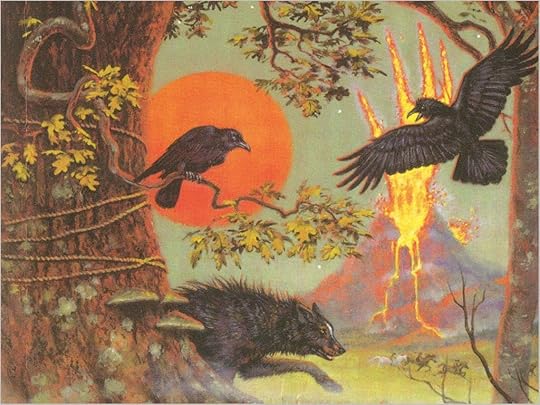
#1 – Mixing Real Life with Fantasy? Do It!
Tolkien’s Middle-earth is an entirely separate universe—no pesky humans from the real world to be found.
But Kay? He’s like, “Let’s shake things up!” His story kicks off with five regular university students from Canada who are whisked away into the magical world of Fionavar.
Modern kids navigating an ancient, myth-soaked realm? Yes, please! It adds a level of immediacy and connection that makes the magic feel even more, well, magical.
Writing Tip – Don’t be afraid to ground your fantasy world with relatable, real-world elements. Bringing characters (and readers) from the familiar into the fantastical can make the transition feel more immersive.
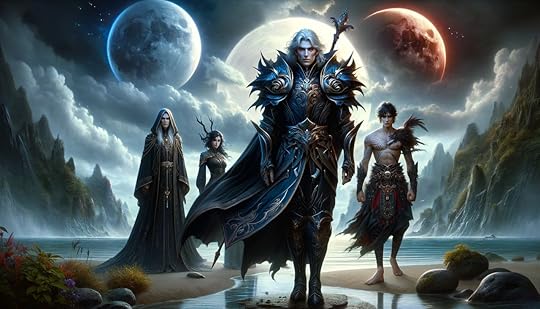 #2 – Make Your Characters Messy (In the Best Way!)
#2 – Make Your Characters Messy (In the Best Way!)
While Tolkien’s characters are often archetypes—the brave king (Aragon), the humble hero (Frodo), the wise wizard (Gandalf).
Kay’s characters are, let’s say, a bit more… complicated.
Take Paul, one of Kay’s protagonists. He’s not just out to save the world—he’s grappling with immense grief, guilt, and self-sacrifice on a deeply personal level. In fact, he literally becomes the Twiceborn, a sacrifice to save Fionavar.
His struggle with fate and free will? It’ll break your heart.
Writing Tip: In today’s fantasy, readers crave characters that feel human. Give them flaws. Let them wrestle with guilt, grief, and big moral dilemmas. It’s the inner emotional battles that make the outer world-saving feel that much more real.
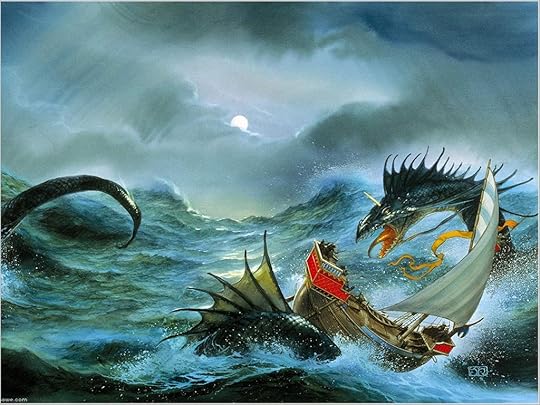
#3 – Keep the Action Moving (Your Readers Will Thank You!)
Let’s be honest—Tolkien takes his sweet time. There are entire chapters dedicated to the beauty of landscapes or the history of Gondor.
And while that’s great if you’re in it for the long haul, today’s readers often want a bit more zip. Kay doesn’t waste time.
His pacing is tight, balancing character drama with action and plot momentum. One minute you’re heartbroken over a character’s sacrifice, and the next you’re knee-deep in a magical war.
Writing Tip: Keep your world-building detailed, but don’t lose your readers in exposition. The stakes should stay high, with character actions driving the story forward.
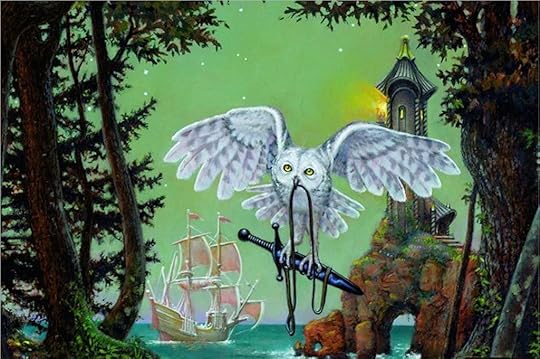
#4 – Sacrifice Hits Harder When It’s Personal.
Both Tolkien and Kay explore the theme of sacrifice, but Kay really digs deep into the emotional cost.
Every decision, no matter how small, feels like it has world-altering weight. The sacrifices in The Fionavar Tapestry aren’t just epic in scope—they’re personal, raw, and make you feel like your heart’s been squeezed.
Writing Tip: Don’t just think of sacrifice in terms of epic battles. Consider what your characters are giving up emotionally—relationships, dreams, their very sense of self.
When the emotional stakes are high, the payoff is huge.
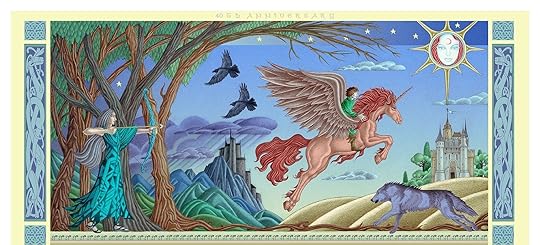
#5 – Myth and Magic—Play it Your Way.
Tolkien’s magic is mysterious and understated. You’re never really sure what Gandalf’s full power is, and the One Ring’s evil is ancient and unknowable.
Kay, on the other hand, leans into mythic archetypes. You’ve got Finn, a version of the Celtic hero Fionn mac Cumhaill, and Arthur Pendragon as literal characters walking through his story. The magic feels deeply tied to the myth, bringing these ancient stories into the present moment.
Writing Tip: Whether you prefer your magic subtle or rooted in myth, make sure it serves the story. It should enhance the world and themes, not overshadow them.
In Conclusion – Both The Lord of the Rings and The Fionavar Tapestry are masterclasses in fantasy writing. Tolkien teaches us patience in world-building and the power of myth, while Kay shows us how to blend the familiar with the fantastical, create deep, flawed characters, and keep the emotional stakes sky-high.
If you’re crafting your own fantasy epic, take a bit from both—balance your scope, dive deep into your characters, and always remember that the emotional weight of your story is what will make readers care.
Now, go forth and write your fantasy masterpiece! And don’t be afraid to play with the tropes, mix genres, and—most importantly—make it yours.
Now it’s YOUR turn – What are some of your favorite fantasy stories, and what lessons have they taught you?
Would love to get your input in the comment box below.
The post From Tolkien to Kay – What Writers Can Learn About Epic Fantasy Storytelling. appeared first on Vered Neta.
October 3, 2024
Write Like the Masters – How Classic Novels Teach Modern Writers to Shine.
A few weeks ago, I dove into some iconic movie scenes and what screenwriters can learn from them.
But now, it’s time to turn our gaze to the towering giants of literature—those classic novels that have stood the test of time, whispering invaluable lessons for modern writers.
The magic of these books lies not just in their unforgettable plots or their rich characters but in the mastery of craft that remains just as relevant today as when they were first penned.
These classics aren’t just dusty relics sitting on the top shelf of your local library. They are treasure troves of inspiration, bursting with storytelling techniques that can elevate your own writing, whether you’re crafting your first novel or refining your tenth. What made these books endure is worth studying, as the lessons they offer are just as fresh and practical as ever.
7 Timeless Techniques From Classic Novels That Can Spark Fresh Ideas In Your Modern Writing.
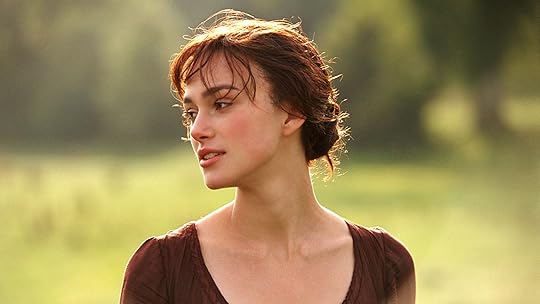
#1 – Mastery of Character Development – Bringing Your Characters to Life.
The secret sauce in many classic novels? Characters are so vivid they feel like real people.
These characters leap off the page, and their emotional journeys keep readers glued to the book. And no one does this better than Jane Austen in Pride and Prejudice.
Think of Elizabeth Bennet—she’s not just a heroine; she’s a complex, intelligent woman with flaws, desires, and a journey of personal growth. Her wit and initial misjudgments (especially about the dashing but misunderstood Mr. Darcy) are her defining traits, but Austen lets her evolve, allowing Elizabeth to confront her own biases and ultimately change for the better.
Lesson for Modern Writers – Don’t just write characters; build them. Let them be messy, flawed, funny, stubborn, and vulnerable. Show their growth naturally through their interactions, not by narrating their thoughts but through their choices, relationships, and actions.
Now, jump forward to Celeste Ng’s Little Fires Everywhere. Ng’s characters, particularly Elena Richardson and Mia Warren, are both multi-dimensional women who challenge each other’s worldviews. Elena’s need for control contrasts Mia’s free-spirited nature. As their worlds collide, both women are forced to confront uncomfortable truths about themselves. Like Austen, Ng takes her time unraveling her characters, allowing their internal conflicts to mirror the larger societal issues at play.
Much like Elizabeth Bennet’s growth, these character arcs are not just about individual change, but about how deeply personal transformation is intertwined with societal norms and pressures.
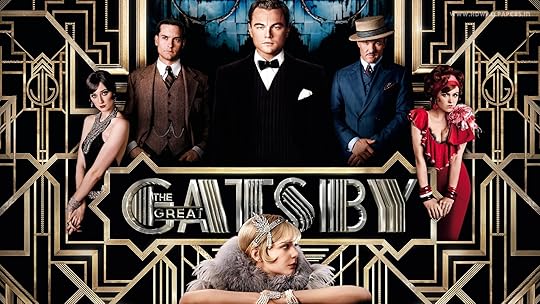 #2 – The Power of Dialogue – Say More with Less.
#2 – The Power of Dialogue – Say More with Less.
Some of the best classic novels use dialogue as more than just a way for characters to talk—it’s a tool for revealing hidden desires, conflicts, and tensions.
One of the most famous lines in American literature comes from F. Scott Fitzgerald’s The Great Gatsby. When Gatsby declares, “Can’t repeat the past? Why of course you can!” the line isn’t just a nostalgic cry—it’s the tragic heart of his delusion. Gatsby’s words show his obsession with a perfect, unattainable future based on an idealized past, and in just a few words, Fitzgerald captures the entire theme of the novel.
Lesson for Modern Writers – Dialogue should pull double-duty. It’s not just about what your characters are saying; it’s about what they’re not saying. Use dialogue to reveal inner tensions, hidden motivations, or the underlying conflicts bubbling beneath the surface.
A modern example? Cormac McCarthy’s The Road. A brief exchange between the father and son—“We’re still the good guys, right?” “Yes. We’re still the good guys.”—is deceptively simple but loaded with meaning. In a world of moral collapse, the boy clings to the idea of goodness, while the father, though affirming, is filled with uncertainty. This dialogue carries the weight of their entire existence and encapsulates the struggle between survival and morality in a post-apocalyptic world.
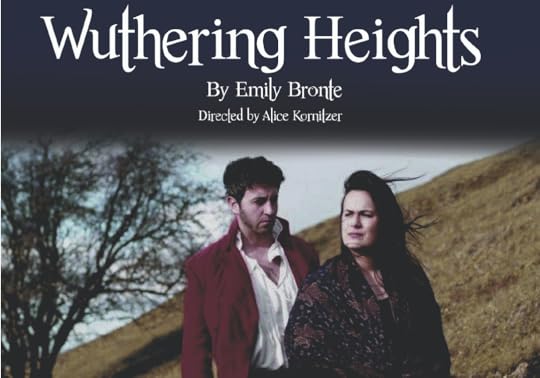
#3 – Vivid Setting as a Character – More Than Just a Backdrop.
In some classic novels, the setting is so vividly described, it feels like another character in the story. Emily Brontë’s Wuthering Heights is a masterclass in this.
The wild, untamed Yorkshire moors reflect the chaotic and tempestuous emotions of the characters, especially in the tumultuous relationship between Heathcliff and Catherine. The setting is more than a backdrop; it’s a metaphor for the destructive passions that fuel the narrative.
Lesson for Modern Writers – Make your setting do more than sit pretty in the background. Let it influence your characters, drive the mood, and deepen the themes of your story.
A modern equivalent might be Donna Tartt’s The Secret History, where the cold, isolating New England campus mirrors the suffocating intellectual elitism and moral decay of the story. The environment shapes the characters’ actions and amplifies the tension in the novel.
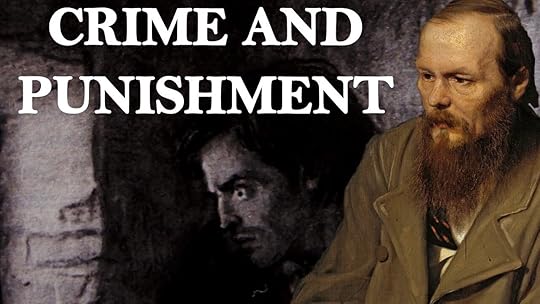
#4 – Complex Themes and Moral Ambiguity – Embrace the Gray Areas.
In classics like Fyodor Dostoevsky’s Crime and Punishment, moral complexity is at the forefront.
Raskolnikov’s murder of the pawnbroker isn’t just a crime; it’s a psychological unraveling that explores guilt, justification, and redemption.
Dostoevsky doesn’t give us clear answers—he forces the reader to grapple with Raskolnikov’s shifting morality.
Lesson for Modern Writers – Don’t shy away from moral complexity. Readers love stories that make them think, question, and debate. Characters who are a little bit good, a little bit bad, and a whole lot human are often the most memorable.
Gillian Flynn’s Gone Girl is a great contemporary example, where neither Nick nor Amy is entirely innocent or sympathetic. The novel thrives on moral ambiguity, forcing readers to confront their assumptions about love, marriage, and manipulation.
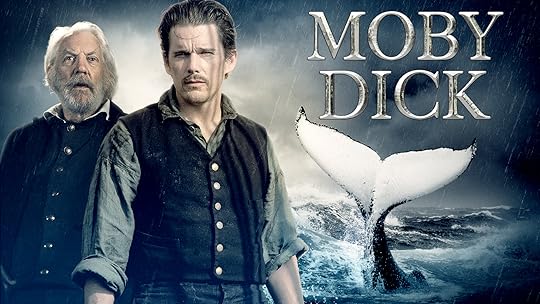
#5 – Pacing and Structure – Keeping the Tension High.
Classic novels like Herman Melville’s Moby Dick are great lessons in balancing action with reflection.
While Melville’s digressions may frustrate modern readers, they serve a purpose—building tension and foreshadowing the inevitable tragedy. The slow build, punctuated by moments of intense action, creates a rhythm that keeps readers hooked.
Lesson for Modern Writers – Find the right pacing for your story. You need those quiet, reflective moments to give readers a breather—but don’t let them linger too long before pulling them back into the action.
Modern thrillers like Paula Hawkins’ The Girl on the Train do this well by alternating perspectives and timelines, slowly revealing the truth and keeping readers guessing until the very end.
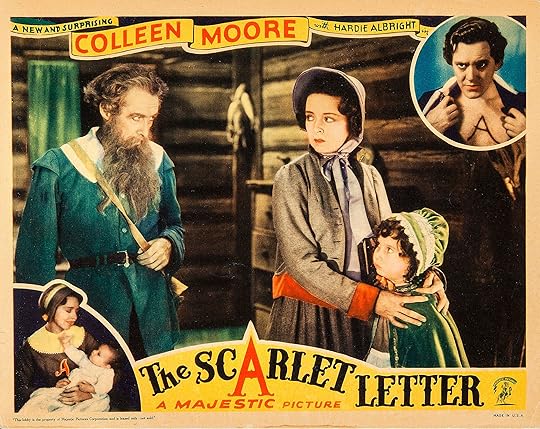 #6 – Symbolism and Imagery – Hidden Depths in Simple Things.
#6 – Symbolism and Imagery – Hidden Depths in Simple Things.
Symbols are the unsung heroes of classic novels. Nathaniel Hawthorne’s The Scarlet Letter is a perfect example.
The scarlet “A” initially symbolizes shame and punishment, but as Hester Prynne reclaims her identity and agency, it transforms into a symbol of strength, resilience, and individuality.
Hawthorne uses this simple letter to reflect themes of guilt, redemption, and societal judgment.
Lesson for Modern Writers – Symbolism and imagery can add layers to your story. Use them to reinforce themes or illuminate your characters’ motivations in subtle ways.
A great modern example is Toni Morrison’s Beloved, where the ghost of Sethe’s child symbolizes the haunting legacy of slavery and the inescapable weight of history.
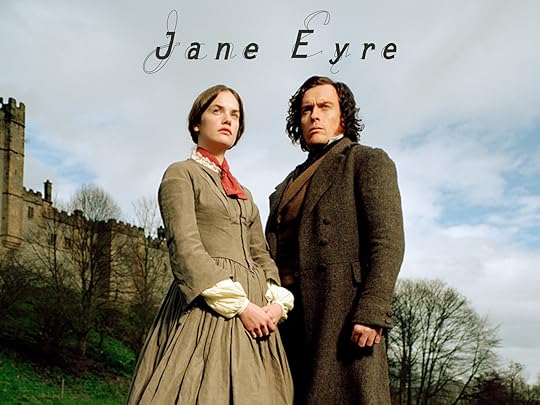
#7 – Immersive Narration and Voice – Creating Deep Connections.
Few novels capture the reader’s attention quite like Charlotte Brontë’s Jane Eyre.
Told in first-person, the novel brings us deep into Jane’s emotional world. As we follow her journey from a mistreated orphan to a strong, independent woman, the intimacy of her voice draws us in, making us feel every moment of her struggle and triumph.
Lesson for Modern Writers – Use narration and voice to pull readers into your protagonist’s world. A distinctive, immersive voice makes the reader feel like they’re living inside the character’s head, experiencing their emotions firsthand.
A modern novel that captures this well is Kazuo Ishiguro’s Never Let Me Go, where Kathy H.’s introspective voice gradually unveils the heartbreaking realities of her world, creating a deeply emotional narrative experience.
In Conclusion – Mining the Classics for Modern Gold. By tapping into the techniques of the classics, modern writers can hone their craft in ways that resonate deeply with today’s readers. These lessons—mastering character development, using dialogue to reveal layers, creating immersive settings, exploring moral ambiguity, pacing your story, and weaving in rich symbolism—are timeless.
Now it’s YOUR turn – What classic novel has had the biggest impact on your life? Why?
Would love to get your input in the comment box below.
The post Write Like the Masters – How Classic Novels Teach Modern Writers to Shine. appeared first on Vered Neta.
September 26, 2024
Beyond the Expected: The Art of Subverting Genre Tropes.
Genre tropes are like the secret ingredients in the storytelling recipe. They’re the familiar building blocks that give shape and structure to narratives, providing audiences with a comforting sense of recognition.
Imagine settling in to watch a rom-com and immediately spotting the “meet-cute” or diving into a horror flick and bracing for the “final girl.” While these tropes create a sense of familiarity, they also open the door to innovation and creativity.
In this blog post, I’ll dive into the significance of genre tropes, discuss when to embrace them, and explore the art of subverting expectations to craft engaging and thought-provoking narratives.
Understanding Genre Tropes.At its core, a genre trope is a recurring theme, motif, or cliché that helps define a specific genre. These elements guide audiences through the narrative landscape, establishing expectations and providing a framework that enhances engagement.
For instance, in romance novels, the “meet-cute” trope—where two characters cross paths in an unexpected yet endearing way—creates a sense of warmth and anticipation. Meanwhile, in horror films, the “final girl” trope, featuring the last surviving female character, builds tension while also hinting at empowerment.

#1 – The Power of Familiarity.
One primary reason writers use tropes is to establish familiarity with their audiences. Tropes help quickly create a world, develop characters, or introduce conflicts without heavy exposition.
Think about it: when you see a grizzled bounty hunter in a sci-fi universe, you immediately understand the character’s role, thanks to the archetype’s established traits.
This familiarity allows writers to delve into deeper emotional storytelling without explaining every detail.
Take The Mandalorian, for instance. It masterfully employs the “Lone Wolf and Cub” trope—a familiar narrative in which a solitary warrior protects a vulnerable child.
Din Djarin (Pedro Pascal), the titular Mandalorian, embodies the classic Western antihero, haunted yet honourable. His unexpected bond with “The Child” (a.k.a. Baby Yoda) flips the script, transforming him from a lone gunslinger into a reluctant yet devoted father figure. Audiences instantly grasp the emotional stakes of this relationship, setting the stage for a rich character arc.
 #2 – Building Anticipation Through Tropes.
#2 – Building Anticipation Through Tropes.
Tropes are not just familiar; they can also be powerful tools for building anticipation. By playing on established audience expectations, creators can weave tension and suspense into their narratives.
This is all about timing and delivery—hinting at an inevitable event and then keeping viewers on the edge of their seats.
Consider A Quiet Place, a film that pivots on the “Silence is Survival” trope.
In this post-apocalyptic world, even the tiniest sound could lead to deadly consequences, creating a relentless atmosphere of tension. The monsters lurk in the shadows, rarely seen but always felt, heightening the audience’s anxiety.
Everyday activities—like breathing or stepping on a creaky floorboard—become fraught with peril, leaving viewers gripping their seats. This slow build-up of tension is a masterclass in how to harness tropes for maximum emotional impact..
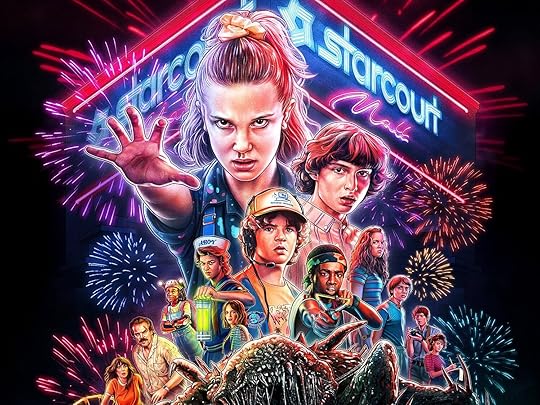
#3 – Nostalgia: The Warm Blanket of Familiar Tropes.
Who doesn’t love a good dose of nostalgia?
Tropes can tap into shared cultural memories, whisking audiences back to beloved eras of storytelling. By referencing familiar motifs, creators can evoke feelings of warmth and fondness, creating a bridge between the past and present.
Stranger Things is a prime example of how nostalgia can be harnessed through tropes. The show is a love letter to the 1980s, brimming with pop culture references, and featuring a group of misfit kids embarking on a grand adventure.
The small town setting and shadowy government conspiracies echo the classic 80s films like The Goonies and E.T., enveloping viewers in a comforting embrace of familiarity. The synth-heavy soundtrack and retro visuals further amplify the nostalgic experience, drawing both older viewers and newcomers alike into its web of memories.
When to Subvert Tropes.While embracing tropes can create comfort and familiarity, subverting them is where the magic truly happens. Subverting tropes involves taking a familiar narrative element and flipping it on its head, prompting audiences to reassess their expectations.
This technique can lead to surprising twists, deepen emotional resonance, and offer fresh perspectives on traditional storytelling.

#1 – Breaking the Mold with Gone Girl.
Gone Girl, directed by David Fincher, is a brilliant case study that subverts the “Unreliable Narrator” trope while challenging the “Perfect Marriage” trope.
At first glance, the film presents Nick and Amy Dunne as a seemingly perfect couple living the American dream. However, as the layers peel away, the facade crumbles, revealing a toxic and deeply flawed relationship.
The dual narratives—Nick’s present-day perspective and Amy’s diary entries—create an illusion of understanding that is shattered when Amy’s elaborate revenge plot unfolds. This twist forces audiences to reevaluate their perceptions and reflects the darker sides of femininity and societal expectations in marriage.
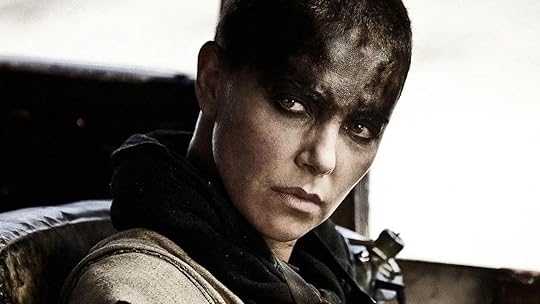
#2 – Character Complexity in Mad Max: Fury Road.
Another noteworthy example is Mad Max: Fury Road, where director George Miller subverts character tropes to develop complexity. Max Rockatansky, the anti-hero, is not merely defined by his thirst for revenge or glory; he embodies trauma and survival instincts.
Furiosa emerges as the film’s true protagonist, showcasing strength, resilience, and agency in a patriarchal landscape.
The “Five Wives” initially presented as objects of desire instead become active participants in their escape, defying the “damsel in distress” trope. This character subversion adds layers to the narrative and challenges traditional gender roles in action films, showcasing a nuanced exploration of power dynamics.
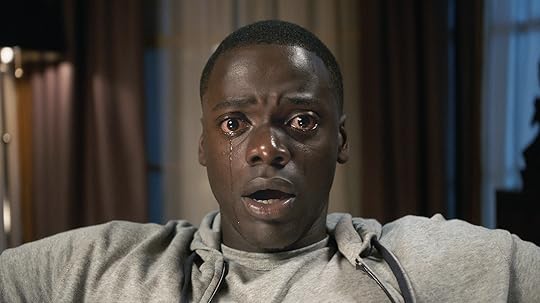
#3 – Social Commentary Through Subversion in Get Out.
Subverting tropes is a powerful way to comment on societal norms and expectations.
By twisting familiar narratives, creators can illuminate cultural critiques and provoke thought, encouraging audiences to reevaluate their perceptions of the world.
Jordan Peele’s Get Out is a masterclass in this regard. It cleverly subverts the “Black Man in a White World” trope, leading audiences to expect a typical horror narrative. Instead, Peele explores systemic threats embedded in society.
The well-meaning white family that initially appears welcoming hides a sinister agenda, revealing the uncomfortable realities of cultural appropriation and exploitation.
The film’s powerful metaphor, the “Sunken Place,” encapsulates the feeling of being trapped and powerless in a society that seeks to control marginalized individuals. Chris’s ultimate survival and confrontation with his oppressors subvert typical horror film resolutions, delivering a message of agency and resistance against systemic racism.
In Conclusion – genre tropes are indispensable tools for storytellers. They can create familiarity and comfort while also challenging and surprising audiences. Understanding when to embrace these conventions and when to subvert them is essential for crafting narratives that resonate deeply with viewers.
Whether you’re a novelist, screenwriter, or simply a lover of stories, consider how you might use or play against these beloved tropes to enrich your characters and narratives.
The best stories balance the familiar with the unexpected, weaving intricate tapestries that reflect the complexity of the human experience. So, the next time you sit down to create, remember: it’s not just about telling a story—it’s about engaging your audience in a journey that challenges and delights. Happy writing!
Now it’s YOUR turn – What tropes do you believe are overused or outdated in today’s storytelling?
Would love to get your input in the comment box below.
The post Beyond the Expected: The Art of Subverting Genre Tropes. appeared first on Vered Neta.
September 19, 2024
Motivation Matters – The Heartbeat of Your Story.
Picture this: you’re deep into a gripping novel or binge-watching your favorite TV show, and you find yourself on the edge of your seat, heart racing, totally engrossed. What’s pulling you in?
Sure, the plot is thrilling, and the twists are mind-blowing, but the real magic lies in something more profound – Character Motivation.
This invisible thread weaves through every plot twist and character choice, transforming ordinary narratives into unforgettable adventures. Let’s dive into why character motivation is the unsung hero of storytelling and explore how it shapes the characters we love (or love to hate)!
Imagine character motivation as the fuel in your story’s engine. It’s what makes characters tick, drives their decisions, and propels them into action.
Think of it as the reason behind every dramatic showdown, heartfelt confession, or daring heist. Whether it’s a burning desire for revenge, a quest for love, or a desperate need to survive, motivation is the heartbeat of a story.
So, why does this matter? Because motivation transforms a character from a two-dimensional figure into a real, relatable person. Without it, your characters might as well be cardboard cutouts, and your plot could end up feeling as aimless as a ship lost at sea.
7 Reasons Why Character Motivation Is Crucial for Your Story.
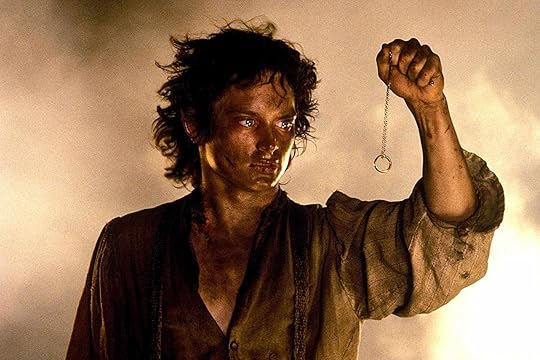
#1 – Driving the Plot Forward.
Here’s the scoop: characters with clear motivations aren’t just reacting to events but actively shaping them.
Their goals and desires create a ripple effect that influences the entire narrative.
Imagine Frodo Baggins in The Lord of the Rings: The Fellowship of the Ring. His mission to destroy the One Ring isn’t just a personal quest; it’s the very essence of the plot.
Every step Frodo takes and every challenge he faces directly result from his determination to prevent Sauron from regaining power. His motivation sets the stage for an epic adventure across Middle-earth, making the journey compelling and full of stakes.
[image error]#2 – Creating Conflict and Tension.
What’s a great story without a bit of drama? Conflict and tension are the spices that keep readers and viewers hooked.
When characters with opposing goals clash or face internal struggles, it adds layers of suspense and emotional engagement.
Take Captain America: Civil War, for example. The tension between Captain America and Iron Man is electric, driven by their conflicting motivations. Iron Man’s guilt and desire for accountability clash with Captain America’s belief in personal freedom.
Their differing stances on the Sokovia Accords create a rift that divides the Avengers and fuels intense emotional and physical confrontations.
This conflict isn’t just about smashing buildings—it’s about deep, personal stakes that keep audiences glued to the screen.
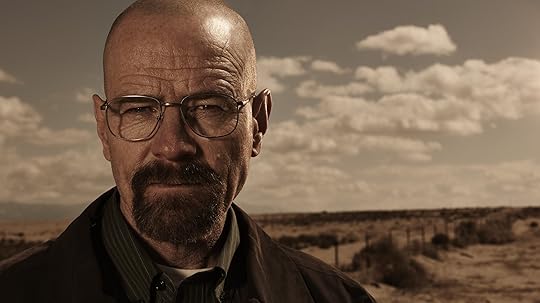
#3 – Making Characters Relatable.
Have you ever found yourself rooting for a character even when they make questionable choices? That’s the power of relatable motivations.
Characters with clear, understandable goals become more human, even if their methods are extreme.
Consider Walter White from Breaking Bad. Initially, he’s a high school chemistry teacher with a terminal cancer diagnosis and a desire to provide for his family.
This humble motivation makes his subsequent descent into the criminal underworld all the more compelling. As Walter’s motivations evolve, his journey from family man to drug kingpin becomes a fascinating exploration of morality, making him both intriguing and relatable.
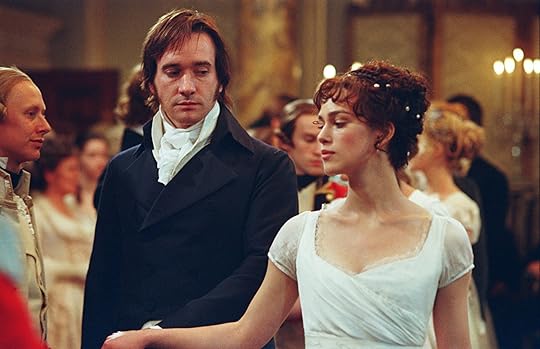
#4 – Providing Character Development.
Motivations aren’t static—they can evolve, leading to rich character development.
As characters face new challenges, their desires and goals might shift, adding depth and complexity to their arcs.
Elizabeth Bennet from Pride and Prejudice is a stellar example. Initially, she’s witty and judgmental, especially toward Mr. Darcy.
As the story unfolds, Elizabeth’s experiences force her to confront her own biases and misjudgments. By the end, she grows from a quick-to-judge individual into a character with a deeper understanding of herself and others.
This evolution makes her journey not just about finding love but also about personal growth, adding emotional depth to her story.

#5 – Enhancing Emotional Engagement.
Motivation is like a magnifying glass that intensifies emotional stakes.
When a character’s motivation is rooted in something deeply personal, like love or survival, it pulls readers and viewers into the story’s emotional core.
In The Pursuit of Happyness, Chris Gardner’s determination to create a better life for his son despite facing homelessness and financial instability tugs at our heartstrings.
His motivation to secure a stable future for his child elevates the emotional impact of his struggles, making his eventual triumph all the more rewarding.
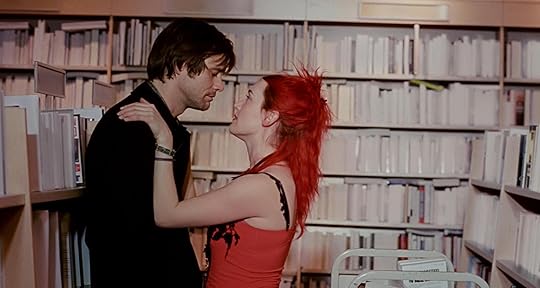 #6 – Internal Conflict.
#6 – Internal Conflict.
Now, let’s delve into the juicy stuff: internal conflict.
This is where a character’s deepest struggles unfold, often between competing desires, values, or fears.
Internal conflict adds layers of vulnerability and humanity, making characters more relatable and their journeys more engaging.
Joel Barish from Eternal Sunshine of the Spotless Mind provides a masterclass in internal conflict.
As he undergoes a procedure to erase memories of a painful relationship, he relives and reevaluates his past with Clementine. Joel’s initial desire to erase the pain is challenged by a growing realization of how precious those memories are.
His internal struggle between escaping heartache and valuing shared experiences drives the film’s emotional depth, making his final decision to keep his memories both poignant and profound.
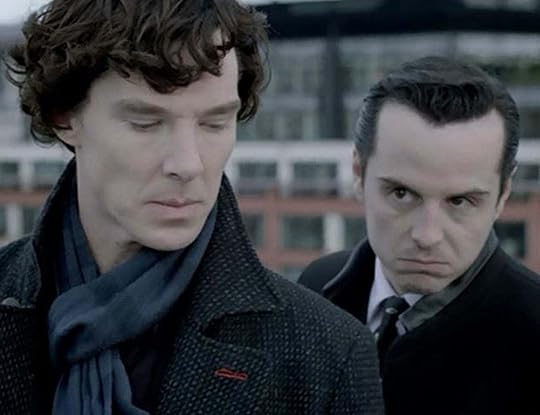
#7 – Moral Complexity.
Finally, let’s talk about moral complexity—the spicy twist that keeps us guessing. Characters with moral complexity defy easy categorization.
They might do questionable things for morally ambiguous reasons, forcing us to wrestle with our perceptions of right and wrong.
Jim Moriarty from Sherlock is a fantastic example. Moriarty is a charismatic genius and criminal mastermind whose actions challenge conventional notions of morality.
His philosophical disdain for societal norms and his twisted personal connection with Sherlock Holmes creates a character whose motivations are both intriguing and unsettling.
Moriarty’s complexity makes him a memorable antagonist who forces both Sherlock and the audience to question their own moral boundaries.
In Conclusion – Character motivation is the secret sauce that transforms a story from a series of events into a rich, engaging narrative. It drives the plot, fuels conflict and tension, makes characters relatable, and provides opportunities for deep development. By understanding and crafting strong motivations, you create characters with depth and purpose, ensuring your story resonates on a profound level.
So, the next time you’re crafting a tale, remember: motivation isn’t just a plot device—it’s the heartbeat of your story. Dive into your characters’ desires, fears, and goals, and let their motivations guide the journey. With strong motivations, your characters will leap off the page (or screen), making your story not just good, but unforgettable.
Now it’s YOUR turn – Which character from a book or movie do you think has the most compelling motivation?
Would love to get your input in the comment box below.
The post Motivation Matters – The Heartbeat of Your Story. appeared first on Vered Neta.
September 12, 2024
Scene Stealers: How Iconic Movie Moments Can Transform Your Writing.
As a writer, I live by one mantra: “Modeling accelerates growth.” And when it comes to screenwriting, there’s no better way to sharpen your skills than to study the greats—those unforgettable scenes from cinema history that leave a permanent mark on our hearts and minds.
You know the scenes I’m talking about.
They are those moments that make you sit up and think, “Wow, I wish I could write something like that.”
But here’s the thing: you can—if you take the time to break them down, analyze their components, and understand why they work. As screenwriters, we must treat these scenes as classrooms, each a masterclass in storytelling, character development, dialogue, and visual composition.
So, why exactly should we analyze these iconic scenes? Let’s dig in.
Why Analyzing Iconic Scenes Is a Game-ChangerDissecting legendary scenes is like looking under the hood of a finely-tuned sports car. You get to see how each part functions, the decisions the filmmakers made, and how all the elements come together in perfect harmony. Here are just a few things you can take away from studying these moments:
Practical Storytelling Techniques: These scenes demonstrate fundamental storytelling principles like pacing, character arcs, and theme execution. By understanding these, you’ll develop a keen sense of structure that will guide your own stories.Mastering Dialogue and Characterization: Some of the most iconic scenes are remembered for their memorable dialogue and fleshed-out characters. Analyzing these helps you create engaging dialogue that feels natural and characters that resonate.Elevating Visual Storytelling: Cinema is a visual medium. The best scenes show how to combine cinematography, sound, and editing to enhance emotional impact. Watching and analyzing these can teach you how to communicate visually as effectively as you do with words.10 Iconic Movie Scenes And What They Can Teach Us As Screenwriters.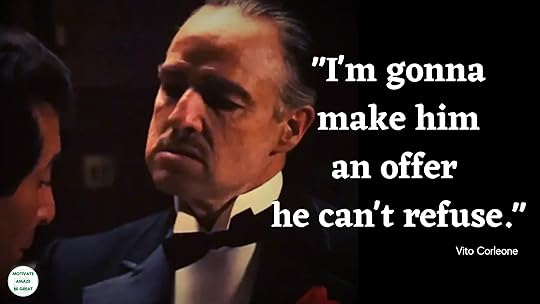 #1 – “I’m Gonna Make Him an Offer He Can’t Refuse” – The Godfather (1972)
#1 – “I’m Gonna Make Him an Offer He Can’t Refuse” – The Godfather (1972)
Genre: Crime/Drama
Lesson: The Power of Subtext
One of the simplest, yet most chilling, lines in cinema history. What makes this scene powerful is what isn’t said outright—subtext.
As a screenwriter, this teaches you that sometimes it’s the things left unsaid that create the most tension and weight.
The scene is a lesson in delivering powerful dialogue without spelling out every intention.
Master this, and your characters will feel much more alive and complex.
[image error]#2 – The Opening Scene – Inglourious Basterds (2009)
Genre: War/Drama
Lesson: Building Tension Through Dialogue
Quentin Tarantino’s opening scene in Inglourious Basterds is the definition of “slow-burn tension.”
What begins as a cordial conversation between a Nazi officer and a farmer escalates with every line, dripping with unease.
The lesson here? Pacing is your friend. Dialogue doesn’t always need to be snappy. Let the tension build. Let the audience squirm in their seats. Sometimes, less is more.
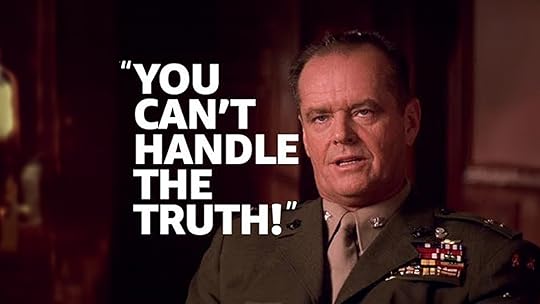 #3 –
You Can’t Handle the Truth” –
A Few Good Men (1992)
#3 –
You Can’t Handle the Truth” –
A Few Good Men (1992)
Genre: Legal/Drama
Lesson: Emotional Conflict in Dialogue
If you want to see an emotional explosion, look no further.
This courtroom battle between Tom Cruise and Jack Nicholson builds perfectly to its famous crescendo.
It’s a brilliant example of how dialogue, when charged with emotional stakes, can become electric.
For screenwriters, the takeaway is simple: put your characters in high-stakes situations, where they have no choice but to confront their deepest truths.
#4 – The Chestburster Scene – Alien (1979)
Genre: Horror/Sci-Fi
Lesson: Twists and Shock Value
There’s nothing quite as memorable as the moment the alien bursts out of Kane’s chest.
It’s a shocking twist, one that catches the audience off-guard, taking the tension of the scene and turning it up to 11.
Screenwriters can learn from this by understanding the value of surprise.
You don’t always have to play it safe—sometimes the most unforgettable moments come from throwing in a twist no one sees coming.

#5 – The Basement Flood Scene – Parasite (2019)
Genre: Drama/Thriller
Lesson: Symbolism and Emotional Weight
This devastating scene from Parasite is not only a physical catastrophe but also a metaphor for the family’s socioeconomic descent.
It’s a brilliant use of symbolism.
For screenwriters, this scene reminds them that what happens on the surface of a story can reflect deeper themes.
Learn how to layer your scenes so that every event has literal and figurative meanings.
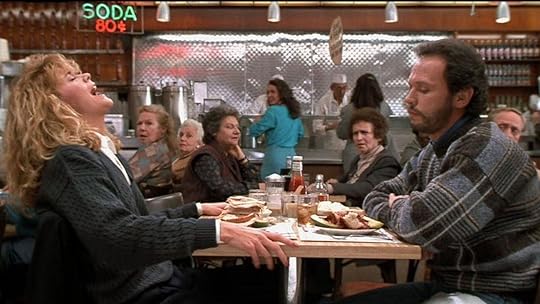 #6 – The Fake Orgasm Scene – When Harry Met Sally (1989)
#6 – The Fake Orgasm Scene – When Harry Met Sally (1989)
Genre: Romantic Comedy
Lesson: Humor in Honesty
Meg Ryan’s fake orgasm in a diner is one of the funniest, yet most relatable moments in film.
It’s a perfect combination of humor and truth, touching on the complexity of human relationships in a way that feels both hilarious and poignant.
For writers, it’s a lesson in how to use humor not just for laughs, but to reveal deeper truths about your characters and their dynamics.
#7 – The Tea Party Scene – Get Out (2017)
Genre: Horror/Thriller
Lesson: Psychological Horror and Subtlety
The brilliance of Get Out lies in its ability to make you feel uncomfortable without overt horror.
The tea party scene exemplifies this, building unease through simple, polite conversation.
This scene teaches us that horror doesn’t always need jump scares or monsters—it can come from the subtleties of human interaction.
For screenwriters, the lesson is clear: sometimes, the scariest moments come from what’s lurking beneath the surface.

#8 – The Spinning Top Scene – Inception (2010)
Genre: Sci-Fi/Action
Lesson: The Power of Ambiguity
Christopher Nolan leaves us dangling at the end of Inception, unsure whether Cobb’s reality is a dream or not. This ambiguity makes the scene iconic, as audiences continue to debate it years later.
The takeaway? Not every question has to be answered. A little ambiguity can keep your audience engaged long after the credits roll, and leave your film with an air of mystery.
#9 – “Rosebud” – Citizen Kane (1941)
Genre: Drama/Mystery
Lesson: Symbolism and Resolution
The word “Rosebud” drives the mystery of Citizen Kane all the way to the end.
When we finally learn its meaning, it’s both heartbreaking and enlightening.
This scene is a masterclass in how to create a mystery that serves the emotional core of your story.
As a screenwriter, learn how to embed symbols that resonate throughout your narrative, delivering emotional payoff at just the right moment.
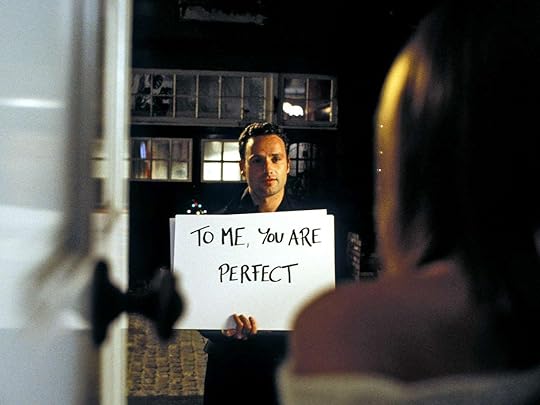 #10 – “To Me, You Are Perfect” – Love Actually (2003)
#10 – “To Me, You Are Perfect” – Love Actually (2003)
Genre: Romantic Comedy/Drama
Lesson: Emotional Vulnerability Without Dialogue
Who says you need dialogue to make a scene emotionally powerful?
Andrew Lincoln’s silent confession of love with cue cards speaks volumes.
Sometimes, the best dialogue is none at all.
This scene teaches us the importance of visual storytelling and restraint. Not every emotion needs to be spoken aloud—sometime, actions speak louder than words.
In Conclusion – If you want to become a better screenwriter, there’s no better way than to study the scenes that have shaped cinematic history.
These iconic moments teach us about pacing, tension, character, symbolism, and visual storytelling. By breaking them down and learning from the best, we can elevate our own writing and create scripts that resonate on a deeper level.
So next time you watch a film, don’t just sit back and enjoy—lean in, take notes, and unlock the secrets behind the magic.
The more you analyze, the more tools you’ll have to craft your own unforgettable scenes.
Now it’s YOUR turn – If you could analyze any film scene to improve your screenwriting, which one would it be?
Would love to get your input in the comment box below.
The post Scene Stealers: How Iconic Movie Moments Can Transform Your Writing. appeared first on Vered Neta.
September 6, 2024
The Art of Writing Believable Dialogue.
Alright, let’s get real. I dove into writing headfirst because I was absolutely smitten with Aaron Sorkin’s dialogue. The way he weaves words was like watching a symphony in motion—I just knew if I worked my butt off, I might someday capture that same rhythm and flow.
But boy, was I in for a surprise! It turns out, writing killer dialogue isn’t just about channeling your inner Sorkin; it’s about having the full trifecta of a script nailed down—Concept, Character, and Structure. Sorkin knew this well, and that’s why his dialogue packs such a punch!
Dialogue is the lifeblood of storytelling. It’s the heartbeat that brings characters to life, propels the plot, and reveals hidden truths about the world they inhabit. But crafting dialogue that rings true? That’s one of the toughest challenges a writer can face.
The difference between dialogue that pulls you into the story and dialogue that yanks you out is all in the details.
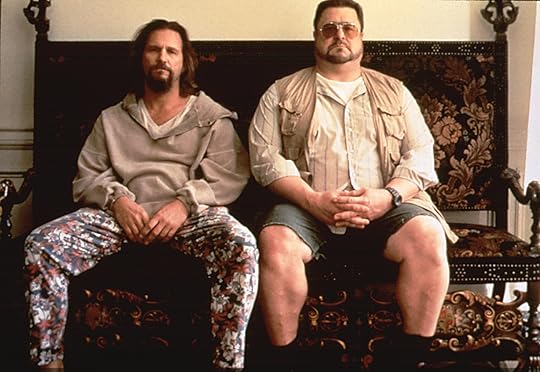
#1 – Understand Your Characters’ Voices.
Think of your characters’ voices as their personal symphonies. Each has its unique rhythm and tune, shaped by their life experiences, background, and personality.
If you nail their voice, you create dialogue that’s as authentic as it is engaging.
Key Aspects to Consider:
Vocabulary and Diction: A scholar will speak differently than a street artist. Choose words that reflect their education and status.Rhythm and Pacing: Fast talkers contrast sharply with those who take their time.Tone and Attitude: Is your character sarcastic, earnest, or cynical? Their tone will tell you more about them than just their words.Cultural and Regional Influences: Accents, idioms, and local slang can add authenticity and color.In The Big Lebowski, The Dude’s (Jeff Bridges) laid-back, stoner dialogue is effortlessly unique.
Take his line, “Yeah, well, you know, that’s just, like, your opinion, man.” His casual, almost apathetic tone perfectly mirrors his easy-going personality, contrasting vividly with the more intense Walter Sobchak (John Goodman)
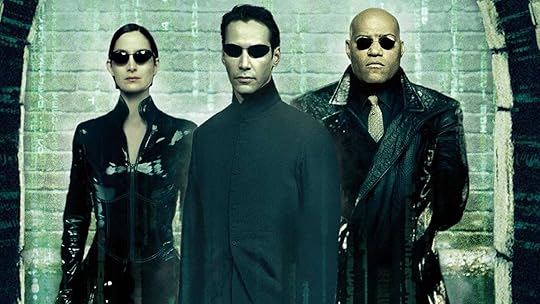 #2 – Avoid Exposition Dumps.
#2 – Avoid Exposition Dumps.
Picture this: you’re at a dinner party, and instead of lively conversation, someone launches into a lecture about the history of cheese. Yawn, right?
That’s what an exposition dump feels like in dialogue. People don’t chat in lengthy monologues.
They reveal details gradually and naturally.
Strategies to Dodge Exposition Dumps:
Show, Don’t Tell: Let actions speak louder than long-winded explanations.Use Subtext: Hint at the details rather than spelling them out.Break Up Information: Spread exposition across scenes to avoid overwhelming your audience.Keep it Relevant: Make sure information naturally fits into the conversation.In The Matrix, rather than a lengthy explanation about the Matrix, we get intriguing snippets.
When Morpheus (Laurence Fishburne) cryptically says, “The Matrix is everywhere. It is all around us,” it piques curiosity and drops just enough info to keep us hooked.
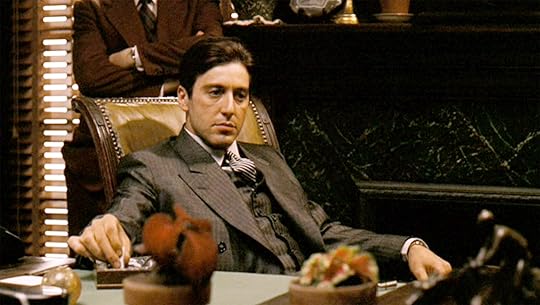
#3 – Use Subtext.
Subtext is like the secret sauce of dialogue. It’s what’s simmering beneath the surface—the unsaid truths, hidden emotions, and underlying conflicts.
Effective subtext adds layers to your dialogue, making it richer and more engaging.
Strategies for Crafting Subtext:
Contradiction Between Words and Actions: Let actions betray hidden truths.Implication Through Context: The situation can suggest meanings beyond words.Ambiguity and Double Meanings: Leave room for interpretation.Non-verbal Cues: Body language and pauses can speak volumes.In The Godfather, Michael Corleone’s (Al Pacino) interaction with his wife, Kay (Diane Keaton), is steeped in subtext. When Michael tells her, “Don’t ask me about my business, Kay,” it’s clear he’s hiding something. Their unspoken understanding and tension add depth to their relationship.
[image error]
#4 – Embrace Silence and Pauses.
Silence isn’t just the absence of sound—it’s a powerful dialogue tool.
Pauses can reveal hesitation, build tension, and hint at unspoken emotions. Embracing these quiet moments can make your dialogue feel more authentic and charged.
Strategies for Using Silence:
Build Tension: A pause before a big reveal heightens suspense.Convey Internal Conflict: Silence can indicate a character’s inner turmoil.Suggest Unspoken Feelings: Let silence hint at what’s left unsaid.Create Realism: Incorporate pauses to mirror natural speech rhythms.In No Country for Old Men, Anton Chigurh’s (Javier Bardem) scenes are dripping with tension. His confrontational moments are punctuated by long, ominous pauses that amplify the fear and suspense. The silence before he speaks and during his coin flip adds layers of menace.
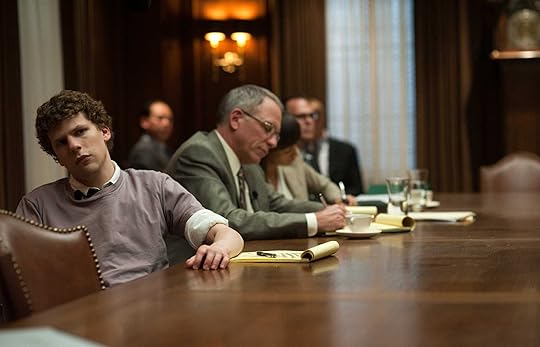
#5 – Make Dialogue Serve Multiple Purposes.
Good dialogue doesn’t just chat—it multitasks. It advances the plot, reveals character traits, develops relationships, and sets the tone.
This way, each line does heavy lifting and enriches the story.
Strategies for Multi-Purpose Dialogue:
Advance the Plot: Introduce new information or create conflict.Reveal Character: Show who your characters are through their dialogue.Develop Relationships: Use dialogue to illustrate relationship dynamics.Set the Tone: Reflect the story’s mood and themes through speech.In The Social Network, the deposition scene is a masterclass in dialogue. The dialogue goes like this:
Lawyer: “Mr. Zuckerberg, do I have your full attention?”
Mark Zuckerberg: “No.”
Lawyer: “Do you think I deserve it?”
Mark Zuckerberg: “What?“
Lawyer: “Do you think I deserve your full attention?“
Mark Zuckerberg: “I think if your clients want to sit on my shoulders and call themselves tall, they have a right to try it—but there’s no requirement that I enjoy sitting here listening to people lie. You have part of my attention—you have the minimum amount.”
Mark Zuckerberg’s (Jesse Eisenberg) sharp responses reveal his arrogance, advance the plot by highlighting tensions, and underscore themes of power and betrayal. It’s a prime example of how dialogue can do much more than just relay information.
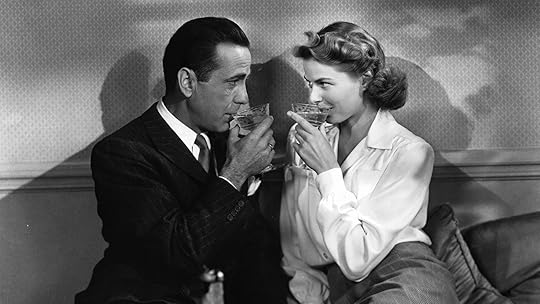 #6 – Keep it Concise and Impactful.
#6 – Keep it Concise and Impactful.
Less is often more in dialogue.
Strive for brevity and punchiness to keep conversations engaging and impactful.
Every line should pack a punch, avoiding fluff and focusing on what truly matters.
Strategies for Concise Dialogue:
Eliminate Redundancies: Trim unnecessary words.Focus on Subtext: Hint at deeper meanings without explicit statements.
Use Strong Verbs and Nouns: Choose vivid, specific language.Create Memorable Lines: Craft lines that resonate.
In Casablanca, Rick Blaine’s (Humphrey Bogart) line, “Here’s looking at you, kid,” is a masterclass in conciseness. It’s short, emotionally loaded, and captures the depth of his feelings without extra words.
It’s a perfect example of how less can indeed be more.
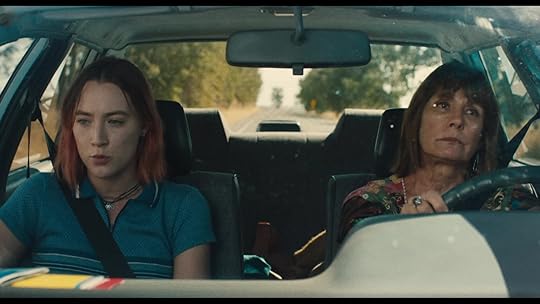
#7 – Stay True to the Themes.
Dialogue should mimic real speech with natural interruptions, hesitations, and informal language, but without getting bogged down in excess.
The trick is to capture the essence of real conversation without cluttering it.
Strategies for Authentic Speech Patterns:
Incorporate Natural Interruptions: Reflect real conversation flow.Use Hesitations and Fillers Sparingly: Add realism without overloading.Capture Unique Speech Quirks: Include personal speech traits.Maintain Clarity and Purpose: Ensure dialogue serves its function.In Lady Bird, the dialogue is refreshingly real. Take Lady Bird’s (Saoirse Ronan) conversation with her mother (Laurie Metcalf) about being “artistic” which goes like this:
Lady Bird: “I think it’s really important to have an artistic family.”
Marion: “An artistic family? What are you talking about?”
Lady Bird: “You know, like an artist family. Like, where everyone is… I don’t know, an artist.”
Marion: “We’re not artists. We’re working-class.”
Lady Bird: “Yeah, but that doesn’t mean we can’t be… I don’t know… artistic.”
The natural hesitations and informal language reflect their personal dynamics and make the conversation feel genuine and relatable.
In Conclusion – Writing believable dialogue is a blend of art and skill. It demands a deep understanding of your characters, a keen ear for natural speech, and the ability to convey meaning through subtlety and precision.
By studying how dialogue shines in films and books, you can hone your craft, ensuring that your characters’ voices resonate with authenticity and impact. So go on, let those words dance and sparkle—just like Sorkin would!
Now it’s YOUR turn – What are your favorite examples of well-written dialogue in movies or books?
Would love to get your input in the comment box below.
The post The Art of Writing Believable Dialogue. appeared first on Vered Neta.
August 29, 2024
Behind the Scenes – 6 Key Differences Every Writer Should Know.
When I started my journey as a writer, I thought writing a feature movie would be easier than an entire novel. Talk about ignorance is bliss. I never knew how difficult writing a feature could be compared to a book.
Guess what? The next hurdle was realising that everything I knew about writing a feature was irrelevant to writing for TV. Over the years, I came to understand the main differences between the art of writing for the Big Screen and writing for TV.
So, whether you’re crafting the next binge-worthy TV series or penning a blockbuster script destined for the silver screen, it’s essential to understand that television and film aren’t just two sides of the same coin—they’re different beasts altogether.
Here Are The 6 Key Differences Between Writing For TV And Film.

#1 – Story Structure: The Marathon vs. The Sprint.
When it comes to storytelling, the structure is your blueprint—it dictates how you lay out your narrative, build tension, and ultimately deliver a satisfying conclusion.
But depending on whether you’re writing for television or film, that blueprint can look dramatically different.
TV Writing.
Imagine you’re running a marathon, but instead of a single finish line, there are many mini-finish lines along the way. That’s TV for you! Each episode is like a chapter in a larger novel.
Take “Breaking Bad,” for example. Walter White doesn’t just break bad overnight—it’s a slow descent over five seasons. Every episode feeds into the next, with plotlines and character arcs weaving together to create an epic, ongoing story.
Film Writing.
Now, think of film as a 100-meter dash. You’ve got to hit the ground running, stay focused, and cross the finish line in record time.
In “The Shawshank Redemption,” everything is wrapped up neatly in a little over two hours. The story has a clear beginning, middle, and end, with no loose threads. It’s like a perfectly tied bow—satisfying and complete.
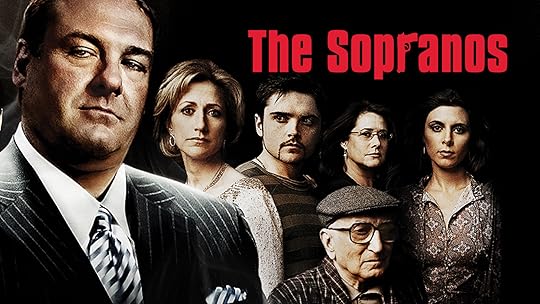 #2 – Character Development: The Slow Burn vs. The Flash Bang.
#2 – Character Development: The Slow Burn vs. The Flash Bang.
Character development is the heart of storytelling. It’s how you transform your characters from mere names on a page into fully realized individuals your audience cares about.
However, how you approach this transformation differs greatly between television and film.
TV Writing.
Remember Tony Soprano from “The Sopranos“? Over six seasons, we watch him evolve (and sometimes devolve) in ways that make us love and hate him simultaneously. TV allows you to take your time, peeling back the layers of your characters like an onion—slowly and with a few tears along the way.
Film Writing.
In film, character development is more like a fireworks display: quick, bright, and impactful.
Take “Joker.” Arthur Fleck’s transformation from a struggling comedian to an iconic villain is intense, and it happens in just over two hours. It’s like watching a storm roll in, where everything happens fast but leaves a lasting impression.
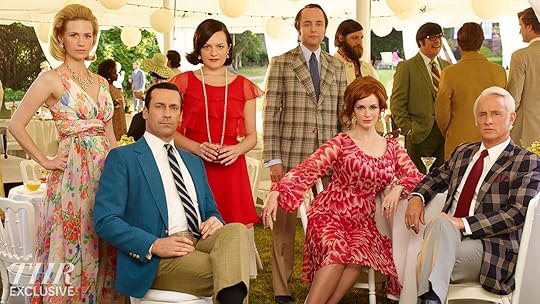
#3 – Pacing: The Long Game vs. The Quick Hit.
Pacing is all about how you control the flow of your story, how you build tension, and how you keep your audience engaged.
Depending on whether you’re writing for television or film, the approach to pacing can be vastly different
TV Writing.
Writing for TV is like playing chess. You can plan out your moves, take your time, and let the tension build gradually.
Shows like “Mad Men” are a perfect example—sometimes, it feels like you’re just hanging out with the characters, soaking in the atmosphere. The show takes its time, allowing subplots to flourish and characters to reflect.
Film Writing.
Film, on the other hand, is more like a game of poker—you’ve got to keep things moving and make every hand count.
In “Mad Max: Fury Road,” the pacing is relentless. There’s no time to stop and smell the roses because every scene drives the story forward at breakneck speed. It’s a high-octane ride from start to finish.
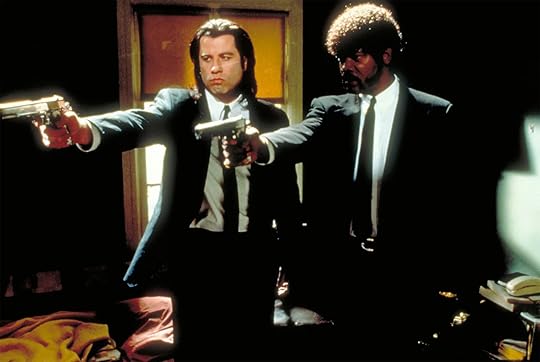
#4 – Dialogue and Scene Writing: The Chatter vs. The Punch.
Dialogue and scene writing are the tools screenwriters use to convey character, advance the plot, and immerse the audience in the story.
However, how you approach dialogue and scene construction varies significantly between television and film.
TV Writing.
When you’re penning a TV script, you can let your dialogue breathe and flow with a more relaxed, conversational vibe.
Think of “The West Wing,” where the characters don’t just talk—they talk and talk and talk. But don’t worry, this isn’t just idle chatter. This endless dialogue is our ticket into their world, giving us a front-row seat to their lives and the intricate world they navigate.
Aaron Sorkin, the maestro of rapid-fire dialogue, has even coined the term “Walk & Talk.” This clever trick keeps the conversations lively and dynamic as characters move through their world, all while the action unfolds around them. And guess what? The scenes often end on a tantalising cliffhanger, making us practically salivating for the next episode. It’s like a delicious appetiser that leaves you craving more—now that’s how you hook an audience!
Film Writing.
In the world of film, every single line of dialogue has to pack a serious punch.
Take the “Royale with Cheese” scene in “Pulp Fiction,” for instance.
On the surface, it’s a seemingly casual chat about fast food, but underneath, it’s bursting with character depth and clever foreshadowing.
Just like Quentin Tarantino, known for his razor-sharp, unforgettable dialogue, film scripts are crafted for maximum impact. There’s no room for idle chit-chat when you’ve only got two hours to captivate and dazzle your audience. Every word must be purposeful, every exchange loaded with meaning, ensuring that every moment counts in the fast-paced world of cinema.

#5 – Collaborative Process: The Writers’ Room vs. The Lone Wolf.
How stories are crafted in television and film isn’t just about the end product—it’s also about how they get there.
The creative process behind TV and film writing differs significantly, particularly in how collaboration plays out. Understanding the contrast between the TV writers’ room and the often solitary world of film writing can shed light on the unique dynamics of each medium.
TV Writing.
TV writing is like a team sport.
Think of “Game of Thrones“—the show had a massive writers’ room where ideas were tossed around, debated, and refined. It’s all about collaboration, with everyone working together to build a cohesive story. The showrunners guide the vision, but each writer contributes to the overall narrative, making it a true group effort.
Film Writing.
Writing for film is often more of a solo journey.
Christopher Nolan, for instance, wrote “Inception” largely on his own. Film writers are like lone wolves, crafting their scripts in solitude then working with directors and producers to bring the story to life. It’s a more singular vision, with less room for ongoing revisions once the camera starts rolling.

#6 – Viewer Engagement: The Hook vs. The Impact.
Viewer engagement is the lifeblood of both television and film, but the strategies to achieve it are quite different depending on the medium.
Whether you’re trying to keep viewers coming back week after week in a TV series or delivering a powerful, unforgettable experience in a movie, the approach to engaging your audience varies significantly.
TV Writing.
TV is all about the long game.
“Lost” kept viewers on the edge of their seats with cliffhangers, mysteries, and complex character arcs unravelling over the seasons.
It’s like an excellent book—you can’t wait to get to the next chapter, and you might even lose some sleep binge-watching just one more episode.
Film Writing.
With film, you’ve got to make a big splash right from the get-go.
“Get Out” is a masterclass in keeping viewers engaged from start to finish. The movie grabs your attention, pulls you into its world, and doesn’t let go until the credits roll. It’s a rollercoaster ride that leaves you thinking long after you’ve left the theatre.
In Conclusion – So there you have it—the ultimate showdown between writing for television and film.
Whether plotting out the next great TV series or crafting a cinematic masterpiece, understanding these differences will help you make the most of whichever medium you choose.
Remember, TV gives you the luxury of time, while film demands precision and impact. But both offer incredible opportunities to tell stories that resonate with audiences.
Now it’s YOUR turn – If you could write a TV series or film, which medium would you choose and why?
Would love to get your input in the comment box below.
The post Behind the Scenes – 6 Key Differences Every Writer Should Know. appeared first on Vered Neta.



